#ii . this is who we are: a product of war ‚ star wars .
Explore tagged Tumblr posts
Text
The year is 2034. Disney announces the production of the show "Resistance: Dooku of Serenno", set during the early days of the Empire, starring CG Christopher Lee.
We begin with a flashback to Revenge of the Sith. After Dooku is beheaded, we learn that he used the Force to supply his brain with blood and oxygen. The movie is visibly retconned - as Obi-Wan, Anakin and Palpatine flee the Invisible Hand, four human parts can be spotted stealthily floating after them.
Dooku, being Dooku, survives the crash and manages to steal away. His head is surgically reattached. Don't ask why nobody else ever stitched their lightsaber-chopped limbs back on. He ends up getting prosthetic hands, anyway. David Filoni said in a behind-the-scenes interview that he thought they were cool.
Previously established canon prevents Dooku from doing anything in-character until Order 66. He lets loose in Coruscant's undercity and becomes the local kooky old man who couldn't possibly be public enemy number one until Mace Windu, freshly fried and unhanded, crashes down in front of him. What a coincidence.
Mace is still played by Sam L. Jackson. He is So Old. He is only there for the paycheck. Disney didn't know how to recast him. He is acting alongside the shell of a man who has been dead for two decades.
After a joke about missing hands that is very funny, the two get along swimmingly. They don't really talk about Dooku's various war crimes. "My droid army would never traumatize a young child," Dooku says with a wink into the camera. Remember to buy your Mandalorian merch.
Mace and Dooku organize an underground resistance on Coruscant in the spirit of the Confederacy. Mace is okay with this. Choice aspects of this arc are compelling, like the fight against fascism under the yoke of cruel state suppression, but tone-deaf allusions to the work of Sophie Scholl cause controversy abroad. Andor did it better. Critics on YouTube who thus far lauded the return of fan favorites and 'faithful casting' tear into the show for pushing the woke agenda.
Nothing Mace and Dooku accomplish has any impact on the Original Trilogy. What were you expecting? The end of the show teases a second season with the arrival of a mysterious woman. Dooku's secret wife. You never knew of her because she was never relevant before. As the final credit music slowly creeps in, she says: "Don't you want to see your son?"
The music swells and we cut to Serenno. The planet has never been mentioned throughout all 15 episodes of the show. Standing in the ruins of Dooku's castle is Dooku's son: back turned to the viewer, gazing into the sunset. Dooku II of Serenno, proud heir, turns his head. He is played by Harry Styles.
Roll credits.
#count dooku#i#I'm actually so sorry I don't know what overcame me#i wrote this in a trance#shitpost
696 notes
·
View notes
Text
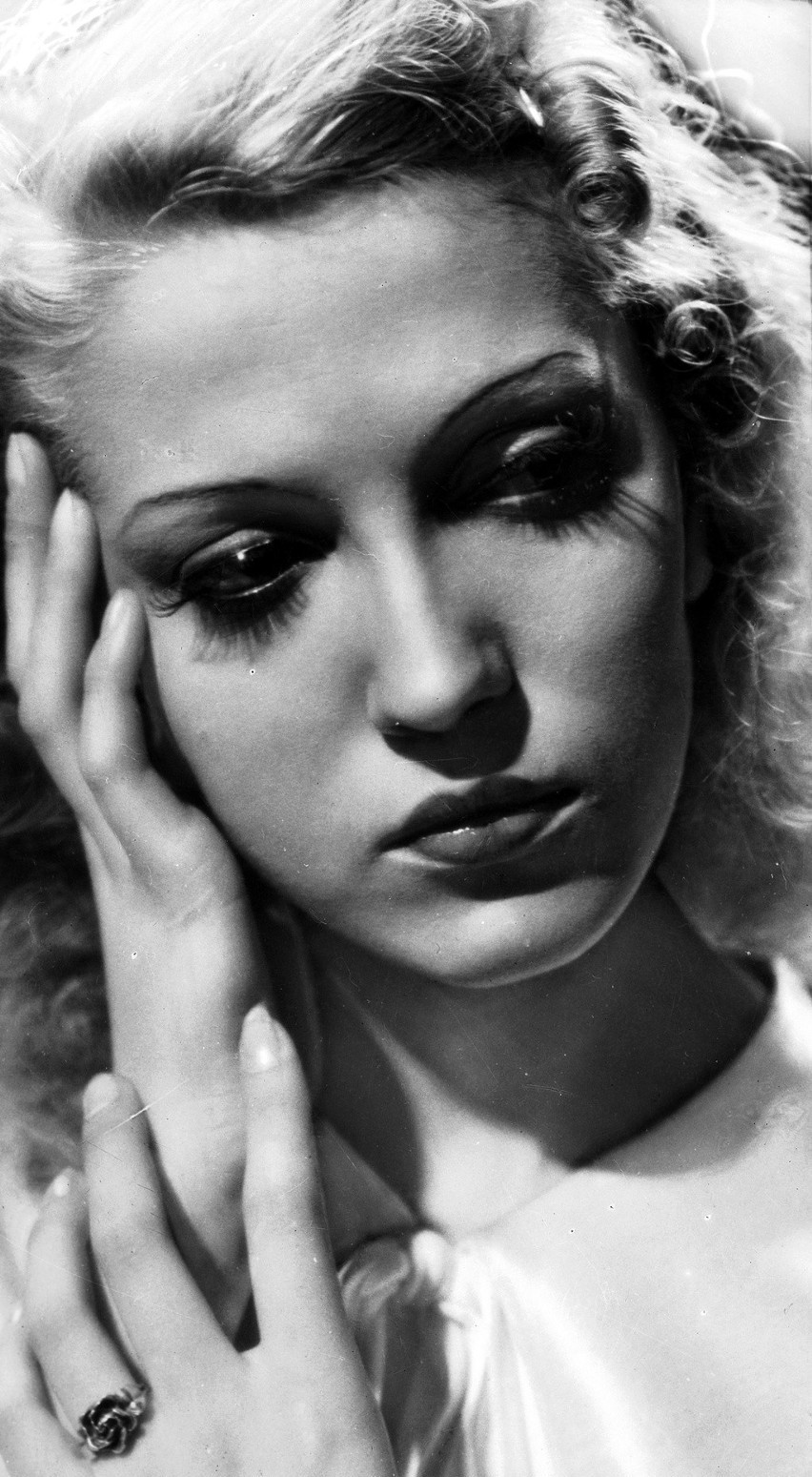






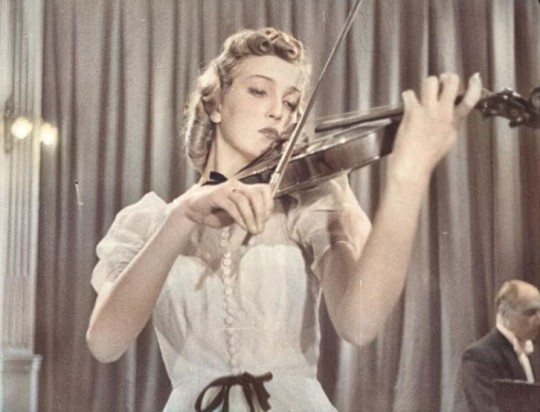

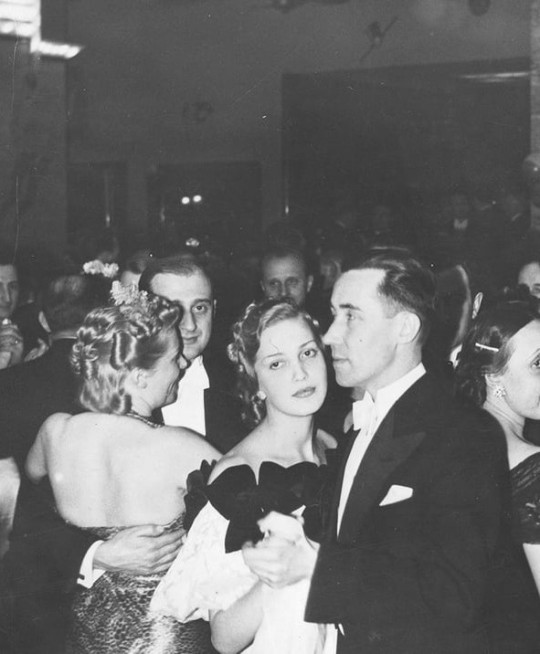
Tamara Wiszniewska (1919-1981) - Polish actress
Tamara Wiszniewska was born on December 19, 1919 in Dubno, Poland (now a region in western Ukraine) on the banks of the Ikva River. It was here that she spent her younger years during which she picked up dancing, which eventually led her to her career in film. In her 1981 obituary in the Democrat & Chronicle, it was reported that Tamara, at age 15, “Was a ballet dancer, when German film director Paul Wegener discovered her and gave her a role in the historical film, August der Starke (August the Strong)” which premiered in 1936. This German/Polish co-production is a biographical look into the life of Augustus II, ruler of Saxony and Poland-Lithuania from 1694-1733. Although Tamara played only a small role it marked her debut and eventual rise to fame within the Polish film industry.
Following her appearance in August der Starke, Tamara appeared in thirteen other films between 1936 and 1939, including Trójka Hultajska (The Trio Hultajska, 1937), Ordynat Michorowski (Ordinate Michorowski, 1937), and Kobiety nad Przepaścią (Women Over the Precipice, 1938). Wladyslaw (Walter) Mikosz, Tamara’s future husband, produced two of these films. In an interview, Tamara and Walter’s daughter, Irene, states that, "The two met because of their film careers, and were married [late that same year] in 1937".
Life for the Mikoszs was happy for a time. Tamara continued to pursue her acting career through 1938 and 1939 and had welcomed a new born daughter into the world alongside her husband, Wladyslaw. Unfortunately, these happy times did not last long as the Mikosz family experienced the rise of Nazi Germany and their occupation of Poland in 1939 during World War II. The following excerpt from an interview with Tamara in a 1974 Times Union tells how drastically their lives were changed:
"I always played a rich spoiled girl who had lovely clothes, and for a short time I lived that kind of life too. It was a short, beautiful life that ended when the Germans took over Poland in 1939. We were wealthy and the toast of the town then. We’d go to Prague and Vienna just to see an opera or to play in the casinos. When the Germans came, my intuition told me I should have something on me to exchange. I sewed my jewelry into my clothes. Later, it bought us passes to freedom and bread so we were never hungry."
The German occupation of Poland during World War II brought then “beautiful” life of the Mikosz family to an end. Gone were their illustrious careers in film and the rewards that such a life had brought to them. In a later interview, Irene mentioned that her mother "was preparing to sign a contract for a film career in Hollywood, but Hitler’s invasion of Poland derailed the plans". Sadly, Tamara’s last appearance on the silver screen was in 1939 prior to the invasion of Hitler’s Germany; she never again starred in any films.
Although her dreams had been crushed, Tamara and her family did not lose hope. They made the best of their current situation, and were able to survive by selling the fruits of their labors that they harvested during their days in the film industry; their lives had been consumed with a fight to survive rather than a dream to thrive. However, not being ones to live quiet lives, the Mikoszs volunteered for the Polish Underground, the exiled Polish government that fought to resist German occupation of Poland during World War II. As civilians with backgrounds in film, Tamara and Walter were most likely engaged in spreading Polish nationalistic and anti-German propaganda. Such efforts of the civilian branch of the Polish Underground was in support of what Jan Kamieński refers to as "small sabotage" in his book, Hidden in the Enemy's Sight: Resisting the Third Reich from Within: "In contrast of major sabotage, the idea of small sabotage was to remind the German occupiers of an enduring Polish presence, to ensure that they felt a constant sense of unease and generally undermine their self-confidence". While attending to these duties within the Underground, the Mikosz family was separated and shipped off to separate countries: Tamara and her daughter, Irene, to Czechoslovakia (where Tamara’s parents had been sent) and Walter to Bavaria. The family was not reunited until 1945, when they were sent to the same refugee camp in Bavaria. The Mikoszs remained in the Bavarian refugee camp until the year 1950, in which they emigrated to the United States of America. Tamara and Walter lived quiet lives in Rochester, NY after arriving from a war-torn Europe, and did so until they passed away.
Although they have long since passed away from this Earth, the stories of the Polish film star, Tamara, and her film-producer husband, Wladyslaw Mikosz, will live on so long as there are people around to tell it.
#history#history crushes#submission#tamara wiszniewska#polish#actress#film history#1930s#30s#old hollywood#women in film#women in history#poland#wwii#world war 2#ww2#ww2 history#old movies#old phography#20th century
189 notes
·
View notes
Text
Hammerin' Hank Greenberg: A Legacy Beyond Baseball 🔨⚾

This May, as we celebrate Jewish American Heritage Month, we shine a spotlight on Hank Greenberg. Known affectionately as "Hammerin' Hank," Greenberg's journey from the Bronx streets to the grand stadiums of Major League Baseball encapsulates the spirit of the American Dream. His storied career with the Detroit Tigers not only earned him a place among baseball legends, but also made him a beacon of hope and pride amid widespread discrimination against the Jewish community.
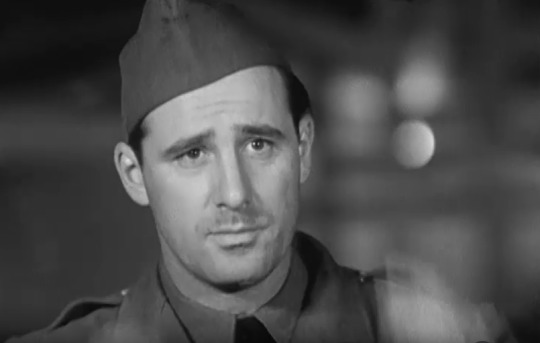
A five-time All-Star and two-time MVP, his exploits on the field were nothing short of legendary. The highlight reel of his career includes the breathtaking near-miss of Babe Ruth's home run record in 1938 when Greenberg hammered 58 homers. More than just statistics, these feats were a beacon of excellence at a time when antisemitism cast a long shadow over America and much of the world.
Greenberg's legacy was carved not only by his bat, but also by his staunch identity as a Jewish American. His decision to observe Yom Kippur and sit out a critical game during the 1934 pennant race spoke volumes, resonating far beyond the Jewish community and becoming a symbolic act of faith and identity.
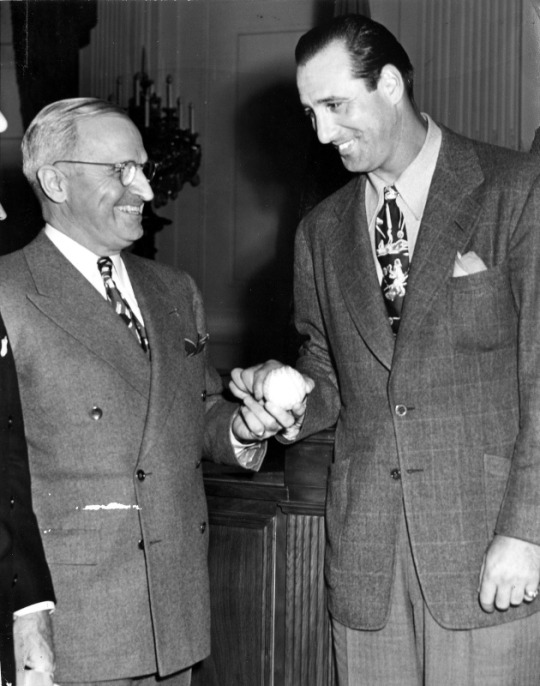

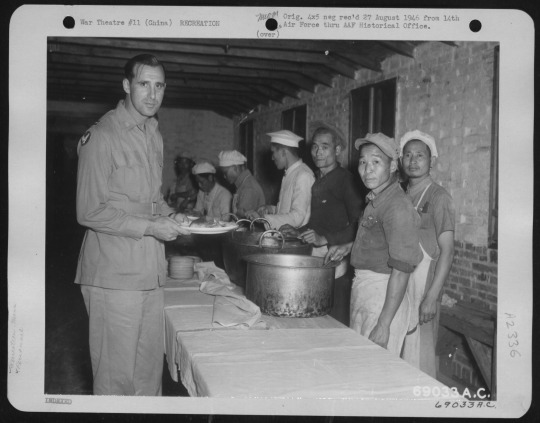
World War II saw Greenberg’s values in action again as he traded his baseball uniform for an Army uniform following Pearl Harbor. His nearly four-year service interrupted what could have been the most productive years of his career, yet he returned to deliver one of the most dramatic moments in sports, a grand slam to secure the pennant for the Tigers in 1945.
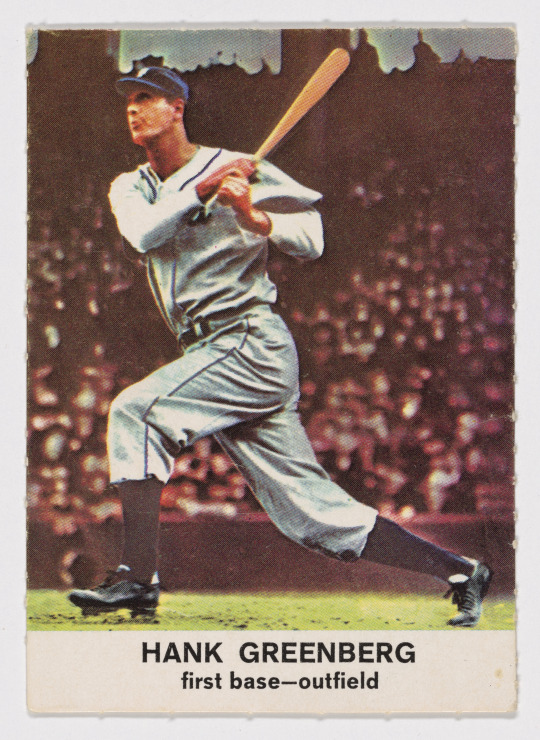
His 1956 induction into the National Baseball Hall of Fame celebrated not just a stellar playing career, but also his enduring influence as a symbol of courage and a breaker of barriers. This Jewish American Heritage Month, we honor Hank Greenberg: a man who swung his bat with the strength of a titan and stood for his community and his country with unwavering pride and bravery.
Additional Resources at the National Archives:
#national archives#history#jewish american heritage month#jewish americans#baseball#hank greenberg#detroit tigers
70 notes
·
View notes
Text
How Aurora awed Billie Eilish, met Leonard Cohen’s lover and sang her way out of the Norwegian woods
The secret star of Frozen II on why she chose music over molecular science – and the reason ‘art without politics is a bit boring’
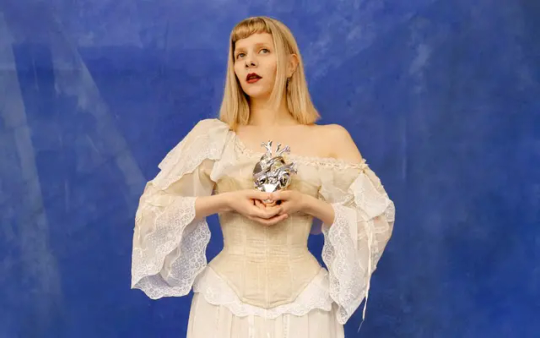
AURORA for The Telegraph, interviewed by Neil McCormick (May 26th, 2024)
“I’ve always known how to sing,” says Aurora Aksnes, in her soft, clear Norwegian accent. “I never really get tired. I can sing for 12 hours. And have a pint of Guinness. And still sing!”
There is something very special about the 27-year-old singer, songwriter and producer known simply as Aurora. Her music is extraordinary, but in person she is enchanting too: warm, witty, intense and slightly unearthly. She dresses with colourfully eccentric flair, and her wide eyes lock on to yours as if she is trying to peer into your soul, or let you see into hers.
The youngest of three sisters, she was raised by her mother, a midwife, and father, a salesman, in remote western Norway as a “person of the forest”, as she puts it, playing piano, writing songs and dancing from an early age. Her intimate and original compositions soon found an audience online and, at 18, she was given a record deal by Decca. Her breakthrough 2015 single, Runaway, has had more than 870 million streams on Spotify (where she has more than 12 million monthly listeners) and in excess of 640 million views on YouTube. Among her early fans was a young Billie Eilish, who has since said “When I saw Aurora, something inside me clicked, like, that is what I want to do.”
While Aurora tends not to trouble the weekly singles charts, her atmospheric music has appeared on the soundtracks to countless video games, TV series and films – and that’s her you can hear singing Into the Unknown, the most irresistible earworm in Frozen II, alongside Idina Menzel. Or you might know her from the 2015 John Lewis Christmas ad, for which she invested an interpretation of Oasis’s Half the World Away with her signature gentle intensity.
Yet her true talent is most evident in her own poetic songs that range from the intimate to the epic and provide a showcase for a clear, high, expressive voice that seems able to go anywhere she wants it to, in productions that blend folk, classical, techno and pop. Enya, Björk and Kate Bush are clear influences, but you could throw into that mix the world-funk blend of Peter Gabriel, the shiny electronic dance spirit of Robyn and the synth psychedelia of The Chemical Brothers. “It’s very hard when people ask what kind of music I do,” she says. “I just like to say I make good music. It’s something I bring from within, like a human organ. I’m an organ donor!”
Released next month, Aurora’s fourth album What Happened to the Heart? is her strongest yet – a vividly emotional set grappling with loss, grief and recovery that somehow shines with a spirit of positivity. “It is not a breakup album,” she insists. “Well, not in the traditional sense of breaking up with a lover. But it has a lot of the same sentiments: saying goodbye, accepting change. It’s about the healing process, and how we deal with pain.” Although she has previously claimed that she doesn’t write from autobiographical experience, she acknowledges that, on this occasion, personal upset (about which she doesn’t wish to go into detail) was involved.
“Usually, I don’t write when I’m sad,” she says. “I don’t want to write in a way that worships the pain; I feel I should heal first, and then I can put light and wisdom in there. But this time it was very urgent. I really felt the need to pour out a lot.”
Yet if the new album draws on individual sadness, it also taps into Aurora’s sense that “something is seriously wrong in the world. While I was writing and recording, wars were breaking out. I could not contain this anger and rage on behalf of the underdog. The music got quite wild and dark.”
As her audience grows, Aurora considers it her responsibility to speak out about the issues that matter to her, whether the state of the environment or LGBTQ+ rights. “It’s not the 1940s any more, a modern star should be in touch with the world,” she says, adding, “Art without politics is a bit boring.”
When Aurora was young, she wanted to be a scientist, perhaps in the field of “molecular technology”, she says – “I still might; life is long!” – but then music took over. “I listened to Bob Dylan and Leonard Cohen, because that’s all the music we had in my childhood home, in the forest countryside in Norway. So when I started writing, I thought that music should say something big.”
She notes that during the 1980s when Cohen’s career was failing in the rest of the world, he was sustained by his popularity in Norway. “He had something otherworldly, that felt like an ancient reminder of kindness and grace in a world that can be very ungraceful and unkind.” Aurora tells me with delight that she knew Marianne Ihlen – Cohen’s lover and the subject of his classic 1967 song, So Long Marianne – who died in 2016, aged 81. “She was from the same village as my grandparents. She was so beautiful.”
There is something discernibly Norwegian about Aurora’s own music, full of allusions to long, dark winter days and the return of the light brought by spring. “It’s funny how deeply the sadness is rooted in the darkness,” she says. “You hear it from way back in our history, in every children’s song; they are all super sad, with heavy melodies, a dead mother, a dead child, a troll in the mountains that’s lonely. When the darkness comes, we hibernate. I read and sleep and cook and light candles, I ask of myself nothing. When everything blossoms, I write a lot; from February to October is [when I’m at] my most creative. Even though the winter months are hard, it’s worth it, because spring is just bliss.”
She believes that music is the ideal medium not only to express that bliss, but to inspire it, too. “I think it reminds people that they have power and hope and potential,” she says. “There’s so much fear in the media, and it makes us very easy to control, because any animal or human in fear makes bad decisions. Music can speak about the same things, but it’s fuelled by love.”
When I point out that images of death and mortality haunt the new album, Aurora laughs – “Well, I am Norwegian!” – before insisting that, ultimately, she won’t allow the gloomy state of the planet to crush her positive spirit. “I’m not pessimistic, but I can sound like it,” she says. “It’s an odd world, that’s all I really want to say. I find it very strange, but also very beautiful.”
52 notes
·
View notes
Text







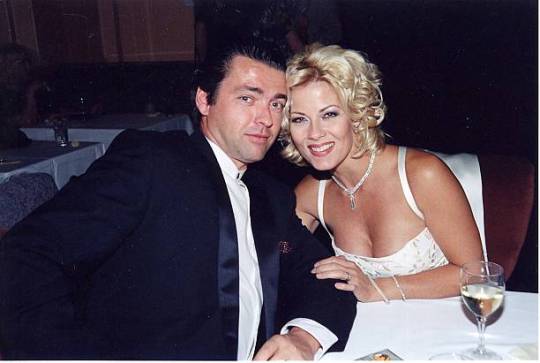


Happy Birthday Scottish actor Angus Macfadyen born 21st September 1963 in Glasgow.
MacFadyen had a nomadic upbringing; thanks to his father’s job with the World Health Organization, he spent his childhood and adolescence in places no less diverse than Africa, Australia, France, the Philippines, Singapore, and Denmark. He went on to attend the University of Edinburgh and received theatrical training at the Central School of Speech and Drama. MacFadyen got his professional start on the Edinburgh stage, appearing in a number of productions at the famed Fringe Festival.
Breaking into television in the early ‘90s, Angus appeared in a number of series for the BBC, including an acclaimed adaptation of David Leavitt’s The Lost Language of Cranes. Following the critical and commercial success of Braveheart, the actor got a rudimentary dose of recognition across the Atlantic, but remained largely unknown outside of the U.K. He starred with Gabriel Byrne and Bill Campbell in the World War II drama The Brylcreem Boys in 1996, playing a German pilot being held captive in neutral Ireland. Until 1998, when he portrayed Peter Lawford in the made-for-cable The Rat Pack, MacFadyen’s other screen appearances tended to be in films that were widely ignored by audiences and critics alike.
He has played Orson Welles in Tim Robbins’ 1999 film, Cradle Will Rock, Philip in the BBC’s production of The Lost Language of Cranes, Dupont in Equilibrium and Jeff Denlon in the Saw series of films
Some of you might remember Angus in the excellent Takin’ Over the Asylum which also starred two great actors in Ken Stott and David Tennant. We last say him on the big screen in very underrated The Lost City of Z
Angus reprised his role of The Bruce last year in Robert the Bruce, among the co-stars, playing his wife Elizabeth de Burgh is Mhairi Calvey, who aged just 5 was ‘Young Murron’ in Braveheart. While I enjoyed the film, I thought that maybe the role of The Bruce was maybe better suited to a younger actor, but it was his “baby”, and he strived for years to get the film made.
He also appeared in the TV series Strange Angel, about a rocket scientist in 1940s Los Angeles is secretly the disciple of occultist Aleister Crowley, played by our man. I have yet to see this, but must look it up. The series was canceled after two seasons.
Angus is currently part of the Outlander cast playing a Redcoat Brigadier-General. He had a small part in the Kevin Costner film Horizon: An American Saga and was King Ferrel in The Last Redemption. Angus has a few other projects on the go.
19 notes
·
View notes
Note
Fine. If we shouldn't stan Danneel, then who SHOULD we stan?!
Hi anon!
I’m glad you asked.
Audrey Hepburn.
Why?
Where should I begin?
Did you know that she did what she could to help to resist the Nazis? She performed ballet to raise money to support the Dutch resistance. She worked, first by studying ballet at the Arnhem Conservatory, then with Sonia Gaskell in Amsterdam and then Marie Rambert in London. She also performed as a chorus girl in West End musical theatre productions.
She studied and then worked. All while surviving World War II, nearly dying of a severe infection, suffering from malnutrition, in the meantime.
Audrey did so well in her first starring film (she did do small roles beforehand) in the romantic comedy Roman Holiday that she was the first actress to win an Oscar, a Golden Globe Award, and a BAFTA Award for a single performance! She also won a Tony Award for Best Lead Actress in a Play for her performance in Ondine.
Later in life, she devoted much of her time to UNICEF, which she contributed to since 1954. Between 1988 and 1992, she worked in some of the poorest communities of Africa, South America, and Asia.
She once said: “The 'Third World' is a term I don't like very much, because we're all one world. I want people to know that the largest part of humanity is suffering.”
In October 1989, Hepburn and Wolders went to Bangladesh. John Isaac, a UN photographer, said, "Often the kids would have flies all over them, but she would just go hug them. I had never seen that. Other people had a certain amount of hesitation, but she would just grab them. Children would just come up to hold her hand, touch her – she was like the Pied Piper."
We should be turning our adoration to people like her. I hope it’s clearer now, anon.
12 notes
·
View notes
Text
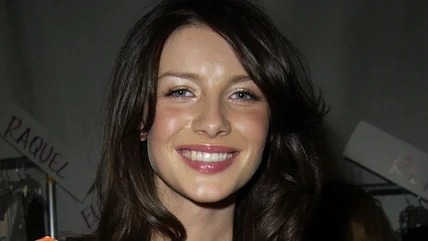
J Vespa / Getty Images
The Stunning Transformation Of Caitríona Balfe
Few shows have had as big a cultural impact as "Outlander." Based on the novels by Diana Gabaldon, the show follows a World War II nurse who finds herself transported to 17th-century Scotland when she finds magical stones in the Highlands. The show was Caitríona Balfe's big break — previously, the Irish actor had worked as a model and appeared in only a few small productions. However, since playing "Outlander's" Claire, she has become one of TV's most recognizable faces. She has also landed roles in films like "Ford v Ferrari" alongside Matt Damon and Christian Bale and Kenneth Branagh's Oscar-winning "Belfast."
With "Outlander" nearing its series finale in 2023, Balfe is looking ahead to new projects such as the upcoming "The Amateur," as the era draws to a close. It's the perfect time to reflect on her career so far. So, without further ado, here is the stunning transformation of Caitríona Balfe.
Caitríona Balfe’s upbringing in Northern Ireland colored the rest of her life
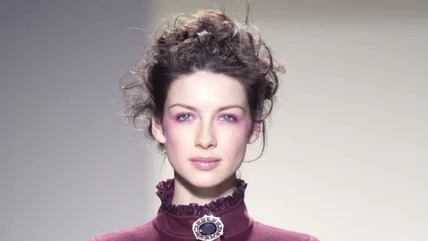
J Vespa / Getty Images
Caitríona Balfe was born in 1979 in the rural village of Tydavnet (1) near the Northern Irish border. Her upbringing in Ireland has colored her entire life. "It's such a part of the fabric of your life when you live in those areas," she told Vanity Fair in 2022. "It's really not until you get older that you look back and you realize the craziness of it, or the strangeness of it."
And by the sounds of things, it was certainly an abnormal place to grow up. Growing up so close to the border, Balfe was used to being surrounded by British soldiers and once even found herself in the middle of a bomb scare.
Her father was a garda, the national name for the Irish police force, and she was sometimes bullied for it. "Let's say being the daughter of a garda in 1980s borderland counties was not the easiest thing," she later told The Irish Times.
Caitríona Balfe was a voracious reader as a child
As a young girl, Caitríona Balfe filled most of her time with reading. In fact, when she was young, her father took away the family's TV, so instead, she looked to literature for stories and entertainment. As she told The Irish Times, she raced through the classics, including Emily Brontë, Aldous Huxley, George Orwell, and Robert Pirsig — she also was a fan of modern writers like Ian McEwan.
When Balfe reached adulthood, her love of literature continued to be a big part of her life. "You always find her on set with a book," her co-star Maria Doyle Kennedy said. "She's a ferocious reader." And, in 2019, Balfe told Stylist, "I could just lock myself away and just read for a month, which would be so lovely."
She even started her own book club on Instagram where she posts videos about what she's reading for her fans. "First rule of book club.... We read ! Then we talk..!" she wrote in one of the first posts in 2020.
Caitríona Balfe grew up wanting to act
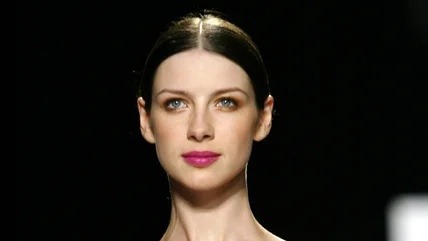
J Vespa / Getty Images
From a very young age, Caitríona Balfe knew exactly what she wanted to do with her life: acting. "It's in you, right?" she said to Backstage when asked about her first inspirations. "Like it's something you're either cursed with, you know, this need for attention and need to perform and all those things," she added, laughing.
Not only was she the fourth of seven children and therefore used to seeking out attention, she also had acting in her blood. After all, her father was something of an amateur actor himself, having appeared in a comedy troupe. "If my dad has some inclination towards it, there is probably something passed down," she mused to The Irish Times. Plus, she added, acting offered a much-needed form of escapism. "[T]here wasn't an awful lot of things to do," she said.
When she got older, Balfe pursued her passion for acting taking a course at the Dublin Institute of Technology.
Caitríona Balfe moved to Paris and began working as a model
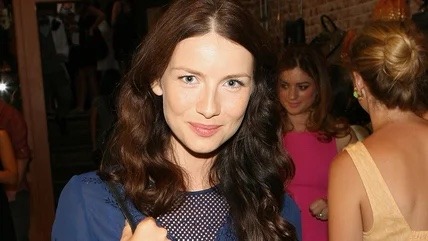
Jesse Grant / Getty Images
Before Caitríona Balfe finished her course at drama school, she was scouted by a modeling agent. "I took what I thought was going to be a year out," she told Backstage, "and I never went back. Very, very bold of me."
Balfe dove into her unexpected modeling career, setting off for Paris. "I always just wanted to travel," she explained to Vanity Fair. "Growing up, we never did that — there were too many of us. We didn't have the money."
Even though Balfe had always dreamed of acting, modeling also appealed to her innate desire to perform. As she put it, "There was something about the theatricality of the runway shows — and the event of it — that I really loved." And she was pretty good at it. She appeared in shows for all of the big designers, including Chanel, Alexander McQueen, and Valentino, and even walked the runway as a Victoria's Secret Angel. And so, for a while at least, she committed herself to a career in the modeling industry.
Caitríona Balfe moved to New York City as her relationship with modeling soured
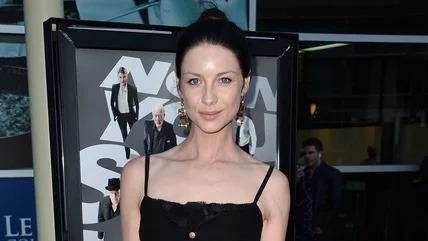
Frazer Harrison / Getty Images
Throughout her 20s, Caitríona Balfe's modeling career careened from success to success. She modeled all over the world but eventually found herself settled down in New York City. "That's been the longest of anywhere since I left Ireland," she told Backstage in 2020. After a decade of modeling, Balfe began to crave something new. "For the last couple of years [of modeling] I was miserable, really," she confessed to Vanity Fair. "It's not exactly the nicest industry or the healthiest industry."
So, discontented with modeling, she revisited her passion for acting, first taking a few classes and later landing a tiny role as one of the "clackers" in the 2006 film "The Devil Wears Prada." "I think they just came to modeling agencies and were like, 'We need a bunch of women who can walk in heels,'" she recalled of the lucky break during an appearance on "The Hollywood Reporter's Awards Chatter" podcast. "My agency knew I wanted to act and if people would come looking for stuff, they were sending me out to a few auditions."
Caitríona Balfe moved to LA to start an acting career
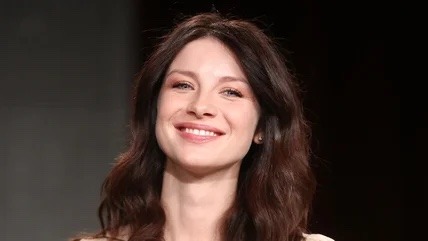
Frederick M Brown / Getty Images
When Caitríona Balfe had finally had enough of modeling, she decided to take a leap of faith into the world of acting — so, she left New York behind and set off for Los Angeles. "LA is where I came and said, 'OK, this is what I wanna do with my life,'" she said to Backstage of her first impressions. She continued taking classes — one was even a $5 class. As she told The Irish Times, "These are the weird things I did when I was wanting to be an actor in LA when I first got here."
In fact, it sounds like Balfe's early years in L.A. were filled with bold, "weird" decisions. For one thing, she only knew one person in the city when she moved. Balfe knew that moving to LA was a bit crazy — but she committed to living in a "bubble of delusion." As she put it, "I guess ultimately I was like: 'I can make this work.'"
At first, following her dream of acting wasn't easy
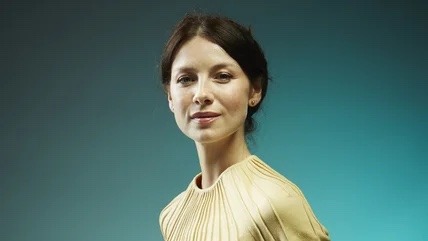
MJ Kim / Getty Images
Life in L.A. was anything but easy for Caitríona Balfe when she first arrived. Initially, she faced rejection after rejection. "I started from scratch. I didn't have any managers, I didn't know any agents, I hadn't acted in almost a decade," she told Backstage of her initial struggles to land work.
But even though Balfe dealt with lots of rejection, she persevered. Luckily, modeling had given her a thick skin that served her well. "In an audition, if it didn't work out, it wasn't always because you didn't do a good job, or you weren't good," she explained to The Guardian. "It was other arbitrary things like your name's not big enough. Which can also be soul-destroying, but I don't know, it's different."
Balfe did land a few roles, but they were few and far between. In 2011, she had a small role in the film "Super 8." In 2012, she landed a guest role on "The Beauty Inside" and the show "H+." In 2013, there were several films: "Crush," "Now You See Me," and "Escape Plan." Slowly, she was building a stronger CV.
Caitríona Balfe landed her big break with Outlander in 2014
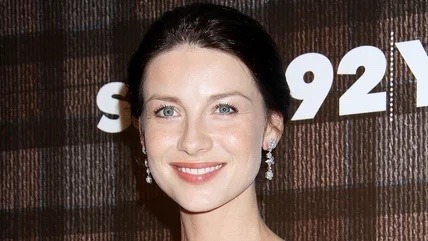
Laura Cavanaugh / Getty Images
Everything changed for Caitríona Balfe in 2014 when she landed the lead role on the much-hyped Starz show "Outlander." "It was a total crapshoot," Balfe later recalled of the audition for the show while speaking to The Guardian. "I had done a few jobs, nothing of note really. I was living in LA and I was really struggling, actually, it was about four or five months since I'd had a job."
At the time, she didn't realize how big the book series was. "I wasn't even aware of the book series when I got the first audition," she said to Vogue. "Apparently, they had been searching for [Claire] for a very long time."
Balfe landed the role when she was about to head off on a holiday in India. Because her career was going slowly in LA, she decided to leap headfirst into a new life, filming in Scotland. "I didn't realize I'd still be there almost eight and a half years later," she later admitted to The Guardian.
Caitríona Balfe shot to fame almost instantly afterward
Almost as soon as "Outlander" came out, Caitríona Balfe became one of TV's biggest names. Ronald D. Moore, who developed "Outlander," had warned Balfe about just how life-changing the role would be. "I walked her to the elevator, and just before the doors closed on her, I said, 'Your life is about to change forever,'" he said to Backstage, recalling the day she was cast. "And she gave me a grin that was both thrilled and slightly nervous. I never saw her hesitate after that."
The first episode premiered at Comic Con. "It was insane," she told Vogue. Soon enough, she began to notice her fame growing. As she told Backstage, she had only a few hundred followers on Twitter before playing Claire. "Within about a month or two, it was thousands of people — and my phone, I didn't know how to turn off the alerts, so it was just going all the time," she said. That's when she realized just how big she was becoming.
Caitríona Balfe became lifelong friends with her co-star Sam Heughan
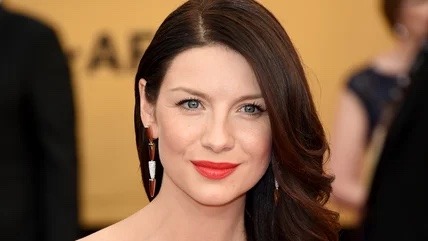
Ethan Miller / Getty Images
Fame wasn't the only life-changing thing to come from her role in "Outlander" — Caitríona Balfe also gained a lifelong friend in Sam Heughan, her co-star. As Balfe explained to Parade, the pair made a conscious decision to become friends before filming even began. "We were just talking about it and we were like, 'Who knows what this is going to be?'" she recalled. The pair agreed to "have each other's backs." She added, "[W]e've done that from day one."
Since then, the pair have only become closer. In fact, during ATX TV's Women of "Outlander" panel, Balfe explained that she and Heughan have never even argued — although they have bickered. Heughan chimed in: "As our lives have gotten more complicated and busy, we may not see each other as much as we used to, but that core and that friendship and that base that we have has never changed." How adorable is that?
Caitríona Balfe landed a number of big roles in the 2010s
As Caitríona Balfe's fame grew in the wake of "Outlander," she landed more big roles in Hollywood — and worked with bigger and bigger stars.
In 2016, she landed a role in Jodie Foster's all-star film "Money Monster" — her co-stars included George Clooney, Julia Roberts, Dominic West, and Giancarlo Esposito. Sadly, Balfe didn't get to work with them too much as most of her scenes were filmed in front of a green screen. Nevertheless, she was starstruck to be working with Roberts. "I couldn't stop staring at her during our first read-through," she told W Magazine.
In 2019, she played Mollie Miles, the wife of Christian Bale's character, in "Ford v Ferrari." Matt Damon also starred in the film. "I walked into that film with the idea that I was gonna be very intimidated by both him and Matt [Damon]," she told Collider. But she was pleasantly surprised. "Immediately, when you meet both of them [and] the first thing that struck me about both of them is that they're just these great, humble family men. There was no ego or bravado. It was lovely."
Caitríona Balfe starred in Kenneth Branagh's Belfast in 2021
Caitríona Balfe landed a huge role in Kenneth Branagh's "Belfast" in 2021, playing Ma, the mother figure in Branagh's semi-autobiographical tale about the Troubles in Ireland. For Balfe, the role was particularly meaningful — after years of acting in Scotland, "Belfast" was much closer to home for the Irish actor. "As an Irish person, you read so many of these scripts about the Troubles, and they all have this romantic version of the violence," Balfe told Vanity Fair. "Belfast," she explained, was different.
In fact, Balfe even saw her own family in the script. "Even though this is very much Ken's story, there's a universality to it that allows you to see your own," she told The Scotsman. "I definitely thought of my own mother in playing Ma."
Clearly, Balfe was extremely proud of the film. It was a huge hit and quickly generated awards buzz. However, Balfe remained characteristically humble. "I'm just happy that it's turned out as beautifully as it has and that it's getting the recognition it deserves because it's shot so beautifully and the hard work and heart and soul that went into making it are second to none," she said.
Caitríona Balfe had her first child in 2021
Caitríona Balfe began dating music producer (2) Tony McGill in 2015 (3). The pair married in 2019, and in 2021, they had their first child. Naturally, having a child gave Balfe a new set of priorities. Even though rumors circulated that she'd be nominated for an Oscar for her role in "Belfast," she found her self preoccupied with her new son. "Luckily, I'm doing a lot of that [changing nappies], so I'm actually not thinking about the awards too much: It's more, 'Stop peeing on me!'" she joked to The Guardian.
However, having a child also brought out Balfe's protective side — especially when she found out that a small group of fans online were convinced that her child was actually the product of an imagined affair with her "Outlander" co-star Sam Heughan. "I don't want those crazies — because that's what they are — I just don't want them talking about [my son]," she told Vanity Fair. Apparently, that's why she and McGill have kept their son's name private.
Caitríona Balfe is preparing to say goodbye to Outlander
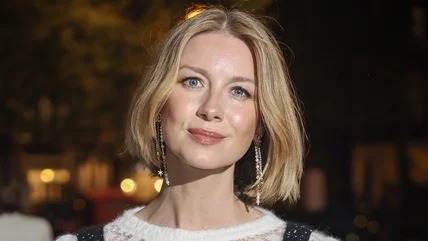
Mike Marsland / Getty Images
In 2023, Starz announced that "Outlander" would be coming to an end after its eighth season. After the WGA and SAG-AFTRA writer/actor strikes, filming for the final season was delayed. However, Balfe has already begun to mourn the end of the show that gave her her big break.
"Sam and I were doing a video for this season and I started to get emotional already," she told the Express. "It's going to be so weird. It's been such an amazing ride that it's nice to wrap it up while we all still love each other and we are all still feeling like we're making a good show."
Even though "Outlander" may be ending, we can't help but feel that Balfe's career is only just beginning. In fact, she's already set to appear in the film "Amateur" (4) in 2024 alongside Rami Malek, Rachel Brosnahan, and Laurence Fishburne. We can't wait to see what else she does next.
The List
Errors that caught Brian’s attention: (1) Dublin (2) artist/band manager (3) 2014 (4) First paragraph says “The Amateur,” as Malek has and IMDb did. Who knows? 🤷🏻♂️ The first promo art will tell us. 🍿
Remember… I walked her to the elevator, and just before the doors closed on her, I said, “Your life is about to change forever.” — Ronald D Moore
Cut & Paste journalism 🤦🏻♂️
55 notes
·
View notes
Text
Balanchine's Coppelia
In today's Times, Roslyn Sulcas has an article about the New York City Ballet's production of Coppelia, which celebrated its 50th anniversary this summer. It had its premiere at the Saratoga Performing Arts Center during the company's annual residency.
One thing that Sulcas fails to mention is that the role of Swanilda was originally supposed to have been shared by Patricia McBride and Gelsey Kirkland. But when Kirkland announced she was leaving the company, Balanchine gave all performances to McBride
‘Coppelia’ at 50: When City Ballet Took a Turn for ‘Fun and Funny’
Original cast members look back at George Balanchine and Alexandra Danilova’s staging of the 19th-century ballet. “Everyone knows when something is good,” one said.
By Roslyn Sulcas Sept. 23, 2024, 5:02 a.m. ET
George Balanchine’s decision to stage the 19th-century ballet “Coppelia,” in 1974, was a surprise. Although Balanchine, the co-founder and leader of New York City Ballet, occasionally created narrative ballets, like “The Nutcracker” and “A Midsummer Night’s Dream,” the company was identified with a lean, no-frills approach to classical dance. It was turned toward innovation and experimentation, rather than story, characters and elaborate costumes.
But the three-act “Coppelia,” with its lush, melodic Delibes score, fairy-tale set and extensive ensemble dances, was anything but experimental. City Ballet audiences were anticipating it “with a mixture of delight, incredulity and awe, and in some cases horror,” the critic Marcia B. Siegel wrote, shortly before the ballet’s July 17 premiere at the Saratoga Performing Arts Center in upstate New York. But Balanchine, who asked his Russian compatriot (and former romantic partner), the ballerina Alexandra Danilova, to assist him on staging the ballet, knew what he was doing. “Coppelia,” starring Patricia McBride as the heroine Swanilda, Helgi Tomasson as her swain Franz and Shaun O’Brien as the eccentric toymaker Doctor Coppelius, was a roaring success, and has been performed regularly ever since. This season’s performances—Sept. 27 to 29 and Oct. 5-6—are City Ballet’s 50th anniversary celebration of the ballet.

Above: Patricia McBride rehearsing Coppelia, 1974. Seated at left are Susan Hendl, who led the Waltz of the Golden Hours in Act 3 and Stephanie Saland, McBride's understudy, who also performed Swanilda. Standing, center: Lincoln Kirstein, Patricia McBride, George Balanchine. Leaning against the piano at right is Rosemary Dunleavy, the ballet mistress. Seated at right are Colleen Neary, who led the Discord & War divertissement in the third act, and Merrill Ashley, who danced the Dawn solo in the same act. Photo: Martha Swope via NYPL/NY Times
“Coppelia” was first choreographed by Arthur Saint-Léon for the Paris Opera Ballet in 1870, and then reworked by Marius Petipa in 1884 into the version we know today. The story is simple: Franz and Swanilda are happily affianced village sweethearts, until Franz falls for a pretty girl who turns out to be a life-size doll—the creation of Doctor Coppelius. By the end of the tale, which involves Swanilda impersonating the doll, Franz has learned a lesson about fantasy and Swanilda has secured her man. Cue wedding celebrations.
Balanchine asked Danilova, a famous Swanilda with a pitch-perfect memory of the Petipa version she had performed with the Ballets Russes de Monte Carlo, to set Acts I and II, although he added a few new dances. But Act III, omitted in many productions, is his alone, a series of divertissements that are a pure-dance coda to the story.
Megan Fairchild, who first performed Swanilda at 19, said she loved the character’s sassy personality. “It’s a more casual vibe,” she said. “She’s not a princess, and that resonates.”
“We do a lot of ballets that are sophisticated and intellectual, for highly developed dance watchers,” said Wendy Whelan, City Ballet’s associate artistic director. “This is lighthearted and warm and easy to watch. It’s a reminder of the beginnings of ballet: the storytelling, the classical dance, the pantomime.” Plus, Whelan added, “it’s fun and it’s funny.” In interviews, five original cast members talked about their memories of creating the ballet. Below are edited excerpts.

Above: Patricia McBride in Act I, 1975. Swanilda's friends in the background are Judith Fugate, unidentified, Delia Peters, and Debra Austin. Photo: Martha Swope via NYPL
Patricia McBride, Swanilda Madame Danilova’s memory was uncanny. She remembered every step for every character in the ballet, and she danced full out when she showed you the choreography. She wanted me to play it straight when I impersonated the doll, not for laughs, and she was very precise about the musicality and phrasing, and the intent of each step. We hadn’t done a lot of mime at City Ballet, but she was so clear, she made it easy to learn. I loved that beautiful Russian port de bras she had. You could see what a great Swanilda she had been.
Balanchine was very specific about the way I held my arms and body as the doll. He never spoke about characterization, or how he wanted it to look, but the musicality of the choreography was so natural and wonderful. He would show you the steps and it was done.
Madame Danilova and Balanchine would keep going all day long, moving from one scene to the next, talking together. It was like seeing history, the two of them in the room together. Mr. B never interfered with her staging. I think he really respected her knowledge and memory.
Sometimes I would feel quite choked up to think of their lives and history together. They were both in their 70s, but they had so much energy and vitality and love, and they had a lot of fun together. They were so young in spirit. I felt so fortunate to work with them, and to see their respect for each other and their love of dance.

Above: Helgi Tomasson in Act 3, Saratoga, 1974. Photo: Martha Swope via NYPL
Helgi Tomasson, Franz I was surprised and not surprised at Balanchine deciding to do “Coppelia.” He spoke about programming like creating a menu; he knew that he had to give the public varied dishes. And I think he loved those old Petipa pieces.
We were up in Saratoga when he started to choreograph my first-act variation. For some reason, he didn’t feel it was right. John Taras, the ballet master, was sitting next to him, and asked if I knew Balanchine’s “Sylvia” pas de deux, also to Delibes music. I had danced it with the Harkness Ballet, and Balanchine said, “Do you remember the variation? Let’s see it.” I did it, and he said, “Good, let’s keep that!”
For me, most of the dancing was in the third act. I loved the way Balanchine constructed the coda and how Patty and I came in and out of the group. He created speedy yet articulate steps that I think he felt suited me.
I remember that Patty and I did every performance of “Coppelia” in the first week, seven or eight in a row. At some point during that first week, I was so tired that in the scene where Franz is supposed to be asleep, I actually fell asleep. But the whole experience was a highlight of my career.

Above: Alexandra Danilova rehearsing Patricia McBride. Photo: Martha Swope via NYPL
Jean-Pierre Frohlich, Corps de Ballet I had been in the company two years and was just 19. I remember so well Balanchine and Danilova standing in front of the mirrors at the front of the studio. She was so elegant. I knew they had been an item in the Diaghilev era, and I was trying to see how those dynamics would have worked! You could see she still adored him.
Danilova loved to demonstrate steps. She wore ballet slippers with a little heel and ribbons. She had beautiful legs, and liked showing them off. She loved men; she was harder on the women than the men.
There was a very good ambience in the studio. They spoke in English, maybe occasionally in Russian, but I think they wanted the dancers to understand. She would never contradict him or say no to his suggestions. I felt she was very happy to be involved. But he was also very accommodating; he knew how much she had to offer.

Above: Gelsey Kirkland, originally scheduled to share the role of Swanilda with McBride, at rehearsal with ballet mistress Rosemary Dunleavy. Photo: Martha Swope via NYPL
Christine Redpath, Prayer Solo Madame Danilova was so charming. She would wear a gorgeous green sleeveless leotard, with a scoop neck and back, a belt and chiffon skirt, hiked up to show her fantastic legs, and her hair coifed with a little scarf tied behind her ears. You could see she still loved to dance, and it was very sweet to see she still loved Balanchine.
[In “Coppelia,” three allegorical female solos, Prayer, Dawn and Spinner, come near the start of Act III. ]
I learned my solo with Balanchine, but Madame Danilova was there because she had danced the Prayer solo in Russia. I think what he created on me was based on that. Balanchine never spoke about the meaning of the solo, but all the gestures are “up,” and the music seems spiritual to me. If you take what he has given you, it’s all there to tell you who you are and what this is.
At some point he showed me a picture of Marie Taglioni in a blue skirt and little top with puffed sleeves and a horseshoe crown with stars, and that’s what Karinska designed for my costume.
Danilova sent me a lovely card and flowers on the opening night. We were all very excited. Everyone knows when something is good.

Above: Merrill Ashley in the "Dawn" variation in Act 3. The costumes are the originals; they were replaced when the ballet was performed in New York the following year. Photo: Martha Swope via NYPL
Merrill Ashley, Dawn Solo The solo he made for me was fiendishly difficult, and it never became easier. There was fast footwork, lots of changes of direction and it ended in plié on pointe on one foot. I liked dancing it, but it scared me. There was one bit on a diagonal that was impossible, and it repeated three times. Eventually I said, I’m really struggling, would you consider changing it, and he said, “Dear, it’s yours, do what you want.”
Danilova choreographed the introduction to the solo, and that had more of a feeling of gentleness, awakening, offering something. Then the sun comes up over the horizon and, boom! Pyrotechnics!
You felt that Balanchine and Danilova were really friends and colleagues. He turned to her a lot; he really respected the knowledge and tradition she brought. I loved watching their interaction.

Above: Children from the School of American Ballet in Coppelia. The pink costumes replaced the golden ones used in Saratoga. Photo: Martha Swope via NYPL
Charlotte d’Amboise, Child Dancer David Richardson, a dancer in the company, was in charge of the kids, and to my twin sister and me he was God. We knew Balanchine was famous, but it was all about David. I was in the big dance in the last act, which I loved. We wore pink tutus and it was really dancey, and we had a whole section that was just us.
Balanchine really loved to have children involved and he could choreograph for them. He did it so easily, almost as if he didn’t think about it, just “go here, do this.” But he must have planned it.
At the first performance in Saratoga, one side of the elastic on my ballet slippers came off and was dangling while I was dancing. All I remember is thinking, David is seeing this—and he was so mad at me. I have never not paid attention to my shoes again!
I did pretty much all of the Balanchine ballets that had children in them, but “Coppelia” was my favorite. You felt like a ballerina, you had to have technique to dance it, and you felt like you were part of the corps de ballet. The best part of being a kid in these ballets was dancing next to these ballerinas and dancers who are goddesses and princes. To be surrounded by high art, to be part of it, affects you forever.
#Balanchine#Coppelia#Balanchine's Coppelia#Alexandra Danilova#Patricia McBride#Helgi Tomasson#Merrill Ashley#Christine Redpath#Jean-Pierre Frolich#Charlotte d'Amboise#Gelsey Kirkland#Saratoga Performing Arts Center#SPAC
8 notes
·
View notes
Text

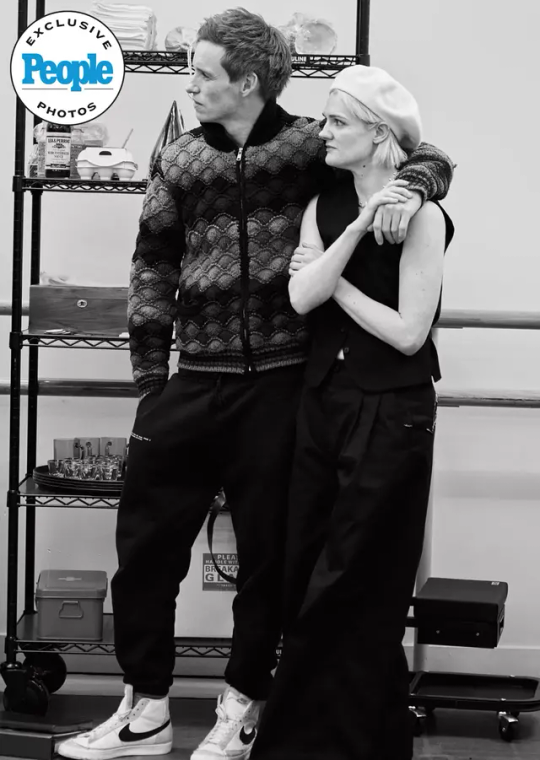
New! "See Eddie Redmayne and Gayle Rankin in First Rehearsal Photos for Broadway's Cabaret Revival (Exclusive)"
Redmayne and Rankin's casting in the revival was first announced back in October 2023.
By Jen Juneau and Dave Quinn. Published on February 13, 2024.
Photos by Jenny Anderson
PEOPLE has an exclusive glimpse at rehearsals for the upcoming Broadway revival, which stars Gayle Rankin as Sally Bowles and Eddie Redmayne as the Emcee.
In one snapshot, Redmayne, 42, and Rankin, 34, smiled at something off camera, while dressed fashionably. The Oscar and Tony winner wore a patterned zip-up sweater and dark slacks, while the House of the Dragon actress rocked a black vest over matching wide-leg pants and a beret.
A second photo showed the pair with a bit more serious expressions on their faces, turned away from the camera as Redmayne put his arm around his costar's shoulders.
Cabaret will be directed by the West End production's director, Rebecca Frecknall, and begin playing in previews at the August Wilson Theatre on April 1, with an official opening April 21. The show features a book by Joe Masteroff, with music by John Kander and lyrics by Fred Ebb.
Cabaret tells the story of Sally Bowles, an English cabaret performer who performs at the Kit Kat Club in Berlin between World Wars I and II, and explores related themes of the time period as well as life at the club.
The show first opened on Broadway in 1966 and the West End in 1968, and has enjoyed several revivals since — most recently in 2021 for London and 2014 in New York City.
The Emcee is not new to Redmayne, as he played the role from 2021 to 2022 in London during the West End revival.
In a statement in October 2023, the Fantastic Beasts actor said his experience with the character goes back more than two decades, when he played the Emcee in a student production of Cabaret.
Noting that his "love for theater was properly ignited" then, Redmayne added, "It now feels completely thrilling and a little surreal to be a part of Rebecca's truly unique vision of Masteroff, Kander, and Ebb's brilliance as it arrives on Broadway, where the piece has such a history."
Frecknall said in a statement at the time that she is "so excited to be reuniting with Eddie as our devilishly seductive Emcee, the metaphorical soul of Berlin."
"I cannot wait to dive into rehearsals with Gayle, a fearless actor of supreme talent, as she explores Cabaret's magnetic core, the breathtaking and heartbreaking Sally Bowles," she added.
Redmayne also gave props to Scottish actress Rankin, saying he was "beyond excited to be doing it arm-in-arm" with her, as well as "a truly stunning cast and team."
"I am hoping we will create an experience for you quite unlike any other," he added.
Tickets for Cabaret on Broadway are on sale now at kitkat.club.
#Eddie Redmayne#gayle rankin#eddieredmayne#redmayne#cabaret at the kit kat club nyc#february 2024#people magazine#rehearsals
13 notes
·
View notes
Text

THE KOBAYASHI MARU TEST
TCINLA FEB 1, 2024 “Kobayashi Maru” is a Star Trek term that people who are not Star Trek fans know the meaning of. The phrase "Kobayashi Maru" has entered the popular lexicon as a reference to a no-win scenario. The term is also sometimes used to invoke Kirk's decision to "change the conditions of the test."
In Star Trek stories, “Kobayashi Maru” is a test designed to test the character of Starfleet Academy cadets, by placing them in a no-win scenario. The Kobayashi Maru test was first depicted in the 1982 film “Star Trek II: The Wrath of Khan.”
In the stories, the “goal” of the exercise is to rescue the civilian ship “Kobayashi Maru,” which has been damaged and is now stranded in disputed territory between the Federation and the Klingon Empire. The cadet being evaluated must decide whether to attempt to rescue the Kobayashi Maru - which means putting their ship and crew in danger - or to leave the Kobayashi Maru to certain destruction. If the cadet chooses to attempt a rescue, an insurmountable enemy force attacks their ship, and they must deal with that.
Metaphorically, that test certainly applies to where we are today.
The term has been applied to real-world scenarios with no perceived positive outcome or that requires outside-the-box thinking, such as constitutional law, where the scenario is an event that may only be dealt with successfully by extra-constitutional, or unconstitutional, methods with the goal of protecting the constitution.
Commentators have used Kirk's unorthodox answer ("I don't believe in the no-win scenario”) to the test as an example of the need to redefine the premises upon which an organization operates - changing the rules rather than playing within them, that by stepping outside the rules of the game one can redefine the game.
While current indications show a shift in the national tide as we have hoped would happen, and with it the increasing likelihood that the enemies of out constitutional republic will fail in their assault, one possible outcome of the election of 2024 is that we may face the Kobayashi Maru Test.
Right now we face a “Crisis of Democracy” in the case of removing Donald Trump from the ballot under the rule in Article 3 of the 14th Amendment, which states that an individual who has taken part in an insurrection against the United States, or has given support to those who have, cannot occupy a political office under the United States and must not appear on the ballot.
“Democracy,” is on both sides of this case.
There are those who see excluding an immensely popular political figure from the ballot as being profoundly undemocratic.
Others see clearly that what is truly undemocratic is to empower a uniquely dangerous demagogue who has already disobeyed his solemn Oath to protect and defend the Constitution against all enemies, foreign or domestic, and is thus a genuine threat who would end the constitutional republic that now exists, were he returned to office.
The tension between these two clashing visions can be resolved only by attending to the Constitution’s own specific implementation of “democracy,” which was the product of a great democratic process after a series of insurrectionary and democracy-imperiling events 160 years ago in the aftermath of the Civil War
Following President Andrew Johnson’s actions allowing the former Confederate traitors who had waged war against the United States to reorganize their states and rejoin the Union with a simple oath of allegiance easily taken with their fingers crossed behind their back while so doing, men who had played leading roles in the rebellion and war against the United States were elected by political means that involved suppressing the votes of those opposed to the former Confederate traitors retaking office - black and white.
Under President Johnson’s new rules, former Vice President of the Confederate States of America Alexander Stevens was elected a Senator from South Carolina, the state that had led the rebellion. When asked what he intended to do as a Senator, Stevens said openly he planned to prevent the government taking action to protect the freed slaves, and that he expected to act with the other Southern Senators and congressional representatives to rebuild the power the South had held in Congress before the war, in which they were able to prevent the enactment of any law or adoption of any policy to which they were opposed.
Had that happened, much more than the treatment of the former slaves would have been at stake. While the Southern reactionaries were out of the government during the war, many progressive acts, such as the Homestead Act opening the West to small farmers, or the Morrill Act, establishing publicly-funded institutions of higher learning in each state - both of which had been opposed by the Southern representatives before the war - would be in danger of repeal by the coming Southern majority. With the South effectively a one-party state, in which anyone elected to office could hold that office for so long as they wished, the South would retake control of the congressional committees, which were based on seniority.
It was decided that those who were proven by their actions to be dedicated to the destruction of the democratic constitutional republic, would be allowed no place, no power, in the government of that republic.
And thus Article 3 of the 14th Amendment was written and became law when the Amendment passed and became part of the Constitution.
Alexander Stevens and the other traitors were “immensely popular political figures” among their fellow insurrectionary traitors who were retaking political control of the newly reorganized states that were being returned to the Union under the policies of Andrew Johnson. Those who say today that excluding such “immensely popular political figures” from the ballot - regardless of their known political beliefs and actions - is “anti-democratic” would have been among the Copperheads (a term for northern Democrats who supported the South) who argued against the adoption not only of Article 3 but the entire 14th Amendment.
Today, Donald Trump and his supporters expressly state their intention to demolish the provisions of that amendment as regards the definition of who is a citizen, among their other planned attacks on the Constitutional rule of law, should they return to office. They are no different from the former Confederate traitors who also wished to continue waging war on the United States.
It has been “interesting” to watch the progression of authoritarianism in the United States over the past 60 years since the “Goldwater Revolution” failed.
We’ve always been told “it can’t happen here,” that there are rules and traditions preventing such a change, that authoritarianism was not even possible in the United States, without some wider cataclysm.
However, the past eight years have shown that if the would-be authoritarian takes on those traditions and guardrails one at a time, his partisans will say that this particular guardrail, this rule, this tradition, must be ignored, because it would be too inconvenient, too “divisive” to enforce it. But of course we need not worry, since the next guardrail can already be seen, and that will stop him.
Don’t worry about his nomination in the primary; he’ll lose the general election.
Don’t worry about his successful election; the party will keep him in check when he takes office.
Don’t worry about the party falling to his dominance; he can always be impeached.
Don’t worry about impeaching him; he can always be beaten in the next election.
Don’t worry about his coup attempt; he can be impeached again.
Don’t worry about the second impeachment; the criminal courts can bring him to justice.
Don’t worry about the criminal cases; there’s always the 14th Amendment.
Don’t worry about him winning; he’ll be blocked from staying in office past this term by the 22nd Amendment.
Unfortunately, it turns out that Trump’s genius was realizing this truth before the rest of us. His lifelong legal strategy of delay and bamboozle is perfect for gumming up the operation of all the defenses the system has built in to constrain him.
The Italians could say of Mussolini, “No one could have really known what he’d do, not for sure.” The Germans could say of Hitler, “No one could have really known what he’d do, not for sure.”
We in the United States cannot say that. Because we know what he’ll do. For sure.
We know what he has done in his first time in office. We have experienced it. When he tells us what he will do now, how he will destroy the Constitution, and the rule of law and destroy the democratic republic that is founded on that Constitution and the rule of law; we know he will do it because we know he has already tried to do it. His supporters promise they will do it.
Maya Angelou once said if someone tells you who they are, you should believe them.
What we are looking at in this year of 2024 here in the United States is the struggle between the idea of democracy and the rule of law, against authoritarianism and totalitarianism.
That struggle is also going on elsewhere. But if it is lost here, it will be lost everywhere.
We’re supposed to let him run on a platform of destroying what we have? We’re supposed to hand over power to him to do that, if he pulls off another Electoral College scam? We’re supposed to just give him the power he needs to do what he has told us he will do? What we know he will do?
We’re supposed to nod our heads and say “Here, you win, we lost, have a good day”?
We’re supposed to just let the fucking New Confederacy walk in and take over????!!
Democracy isn’t a suicide pact.
It’s been said many times, by conservative legal scholars, that “The Constitution isn’t a suicide pact.”
It’s a well-known rule of law that you cannot use the law to destroy the law.
Democracy matters. Freedom of expression matters. The rule of law matters. Values matter. That’s what’s at stake.
Our ancestors already made the decision for us. The rule is NOT that we surrender all because a “rule” says so. That rule has been superseded in this case. The rules of the game have already been changed. We can save the Kobayashi Maru, and damn any six traitors on a compromised, discredited, corrupt court who say otherwise.
For me, I can take Senator Angus King’s words, spoken on January 31, 2024 in debate over supporting the Ukrainian battle for survival, as a lodestar, a guide for action:
“I want to stand on the side of resisting authoritarianism, on the side of democracy, on the side of the values that the country has stood for and that people have been fighting for, for 250 years.”
WE are the ultimate defenders of the Republic.
Donald Trump cannot be allowed back into power, regardless. Ever.
TCinLA
16 notes
·
View notes
Text
My personal ranking of Kotor companions from most to least favourite:
Juhani - naturally the top spot goes to the first lgbt+ character in star wars media. we love a lil lesbian
Mission Vao - this is my child, goes without saying
T3-M4 - he beeps! he goes deet deet! he has a flamethrower! he cost like a thousand credits though hence the third place ranking
Hanharr - so I know no one ranks him very highly ever or talks about him cause it’s actually pretty hard to get him in a play through but like. if you can find his dialogue options online and read through all his conversations I would so recommend it. He is absolutely fascinating whether you’re giving LS or DS answers and he’s an extraordinarily interesting character study (as are all the Kotor II characters but he’s a particularly underrated one). They took a lot of elements of Zaalbar but also Juhani and really fleshed them out and since Juhani’s my fav it makes sense I’d like him
Canderous Ordo - bioware let me romance him I’m begging you on hands and knees. that being said I know my opinion of him is biased for this reason so to be objective he’s a few spots down
Atton Rand - normally I don’t get the obsession when tumblr goes nuts for the most average men but like. i get it this time. Especially because he’s not average he’s arguably the most nuanced and complex star wars character to exist, even more so than Kreia (to me) with insane depth and his romance is certainly the best written romance in star wars. but also this man doesn’t shower
Mira - I feel like sis never gets enough credit for definitely (in my mind) being down bad for female exile. like she fully rejects male exile if he comes on to her and then when she comments to the other girls like “back off he’s mine” she follows up with clarifying that if anyone is going to turn him in for a bounty it’s her. and if female exile asks if Mira knows anything about men Mira’s just like “I know how to hunt them for bounties. What else could you possibly need them for.” and when you read her thoughts she only wonders how male exile still looks so young but for a female exile she specifically is like “she’s just so naturally beautiful” cue hearteyes. That being said her being wlw is not canon and she absolutely reeks of performative third wave feminism
Kreia - Kreia, sis, take a chill pill. wonderful, fascinatingly written character and all but like. damn. also middle of the list for being a parasocial mother figure to me in all the good ways and the bad. She would be lower but she was a fucking beast in combat plus carrying on the Star Wars legacy of losing hands in lightsaber duels
Carth Onasi - they said cookie cutter hero even down to the dead wife but also give this man the worst trust issues you’ve ever seen and make him awful at flirting. I did not know the game pseudo forces you into his romance even if you reject him, cause I’ll not lie the first time I played through the game his awkward and downright terrible rizz captivated me. but also if I didn’t give Mira a free pass for product-of-its-time writing, it’s not fair if I don’t also judge Carth for that so like negative points for pushy sexism
Visas Marr - don’t like that if you’re a male exile it forces you to have only saved her life out of sexual desire no matter what you say about it. and if we’re judging Carth’s romance for that, we have to judge this too. plus she’s so bad in fights, I don’t know what it was but I could never get her to stay conscious for any fights even low level ones no matter what I did in a play through. But also my darling with the best fashion taste in these entire games. Shy lil sweetheart who also fully was preparing to slit your throat. Like I love her, the uselessness as a companion is fully the reason she’s so low
Bastila Shan - she is as preachy as everyone says and it’s so much worse when you learn she’s supposed to be like 20 years old (which yikes x1000 for male Revan) but even with female Revan I was always willing to overlook the preachiness as a character thing back when I thought she was closer to the same age as Revan, like in her 30s or close to equals at least. But it does become much harder to overlook the arrogance and lectures when this snotrag is like at least a decade younger than you. also what even is battle meditation it’s a stupid power. but I cannot deny the mommy issues did make me relate hard plus now that legends isn’t canon (not that it ever was) that means legends is whatever I want it to be so in my brain Bastila is at least 30
Zaalbar - I want to like him so much more than I do. He’s just I think one of the worst cases of Kotor I having a very limited system of good and evil so like all of the nuance that his character could have is pretty straightforwardly handled and very black and white
Jolee Bindo - take notes Kreia on the superior grey jedi (even though I ranked him so much lower than her lol). but yeah mad props for being the only true grey jedi to exist in these games, at least when you first meet him. I just unfortunately have adhd and since his whole character and all his interactions are just longwinded war stories, I get very bored very quickly. (and yes Canderous is similar but his stories are shorter and don’t make up his entire relationship with Revan and also I want to romance him)
Bao-Dur - we love to see disability rep just would be nice if I could have more than like three conversations with him. as great a setup and backstory as the rest of the Kotor II companions and then they do basically nothing with him even if he learns Force wielding
HK-47 - he’s mostly so far down because I think he’s extremely overrated. like he as a character is fun but he’s treated like the greatest cleverest writing to have ever existed when it’s literally just the same two jokes over and over again
Mical the Disciple - I do love him actually but yeah everyone’s not wrong about him being the blandest most milquetoast nerd to have ever existed. I do have affection in my heart for him but unfortunately he must also lose brownie points for replacing Dvakvar, an infinitely cooler character
Brianna the Handmaiden - this girl would have bullied me in high school I think
Dvakvar Grahrk - why did they replace this cool alien with yet another boring human. clearly they did not think it would be believable that Atton would be jealous of an alien’s relationship with f!exile or else he’d have been more jealous of Bao-Dur as well. star wars made aliens only to hate on them and quite frankly I would like to have recruited and possibly (depending on the quality of footage that could have existed) even romanced Dvakvar. Unfortunately because we know next to nothing about him he must come at the bottom of the list. RIP to what could have been
G0-T0 - I literally forgot about him at first, I simply do not care about this thing
Honorary mention: Bao-Dur’s Remote - he’s just a lil guy that zooms around! no flaws nothing but perfection. would be number one if I considered him an full companion. Also honorary mention to Trask Ulgo, gone but not forgotten
#star wars#kotor ii#kotor#kotor companions#knights of the old republic#star wars knights of the old republic
8 notes
·
View notes
Text
Time Out says
5 out of 5 stars
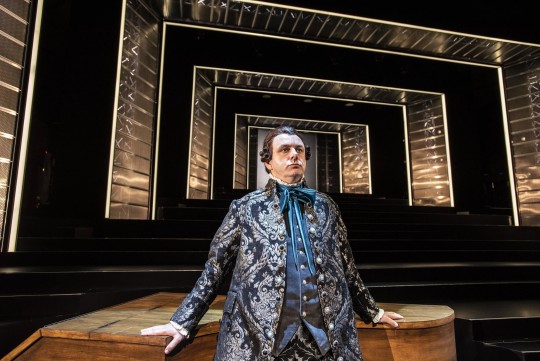
Michael Sheen is captivating in this epic production that marries 18th century Vienna with the Beatles circa Sergeant Pepper’s Lonely Hearts Club Band
You could be forgiven for thinking that this latest production of Amadeus had reworked Peter Shaffer’s 1979 Tony Award-winning play into a one-man show, so thoroughly does acclaimed Welsh actor Michael Sheen dominate the marketing material. And you’d only be half-wrong. At times there are around 40 people on stage together, but Sheen’s turn as the preening, pompous, guilt-wracked, self-aggrandising Antonio Salieri is so captivating you find yourself having to drag your attention away from him even when he’s simply sitting quietly in a chair on stage while the action of the scene plays out away from him.
When we first meet Salieri the once-revered composer is a withered old man, dressed in a wig and a red robe reminiscent of Gary Oldman’s first appearance in Bram Stoker’s Dracula. And much like that film, Amadeus tells the tale of a devout man who declares a war on God. In Salieri’s case, it is unquenchable professional jealousy that drives his mutiny against heaven; on meeting the prodigiously talented Wolfgang Amadeus Mozart (Rahel Romahn, recently seen on screen in Here Out West and excellent here) at a salon in music-obsessed 18th century Vienna, he simply cannot reconcile the man’s unarguable compositional genius with his boorish, scandalous behaviour. Aghast at the injustice that God would grant such talent to such a man, he resolves to destroy Mozart – to strike back at God, he tells us, not for any mere personal grudge. If you say so, Salieri.

...this is 18th century Vienna by way of the Beatles circa Sergeant Pepper’s Lonely Hearts Club Band
From there we flash back to see how Mozart’s fortunes wane even as his talent swells, all down to Salieri’s Machiavellian machinations at the court of Emperor Joseph II (Toby Schmidt of Black Sails, fantastically foppish in Hugh-Laurie-in-Blackadder mode) – who loves music as long as it doesn’t have too many notes, and whose mercurial whims can spell fortune or disaster for all around him.
It all plays out on an impressively deep stage designed by Michael Scott-Mitchell that caters to expansive crowd scenes, yet also conveys an almost claustrophobic intimacy during the dramatic two or three-hander scenes. Indeed, Amadeus is something of a chamber piece, and it’s interesting to wonder how it might play out on a smaller stage than the Opera House’s (spectacular, have no doubt) recently refurbished Concert Hall. There’s a tension between the scope of the story and the scale of the production.
The splendid costumes by Anna Cordingley and local fashion legends Romance Was Born take no prisoners, evoking the OTT court fashions of the time and then some – this is 18th century Vienna by way of the Beatles circa Sergeant Pepper’s Lonely Hearts Club Band. Veteran actor Sean O’Shea’s outfit as Baron Gottfried van Swieten, frenemy to both Salieri and Mozart, is impressively peacockish. Salieri’s dourness and religiosity is conveyed by his comparatively sober black and silver ensemble, while Mozart looks like he can barely be convinced to dress himself, his sleeves loose and ragged.
There’s not a bum note in the cast (if we can’t use music puns here, where can we?) and Lily Balatincz is particularly impressive as Mozart’s increasingly desperate wife Constanz, bringing nuance to what could have been a rote victim role. But this is Sheen’s show, make no mistake.
Back at the dawn of his career, Sheen took on the role of Mozart opposite David Suchet’s Salieri in a landmark production that took him from the West End’s Old Vic to Broadway and Los Angeles, so there’s a pleasing symmetry to him essaying Salieri now. It’s an immensely challenging role, the character bearing the burden of attention for almost the entire two-hour and fifteen minute running time (a 20 minute, slightly-too-short intermission included). But Sheen handles it beautifully, adjusting his posture and changing his accent to embody both the elder (who has reverted to his native Lombardy accent) and younger court composer. Crucially, Sheen has the charisma to make us, his audience and confessor, complicit. Salieri is one of the great villain-protagonists of the stage, and while Shaffer’s deft writing does a lot to help us connect with this self-crucified man through his pettiness and hypocrisy, there needs be considerable charm in play to seal the deal and make us want to spend a little under three hours in his company. Sheen, wrapping himself around Shaffer’s delicious dialogue like a mongoose around a cobra, has it in spades.
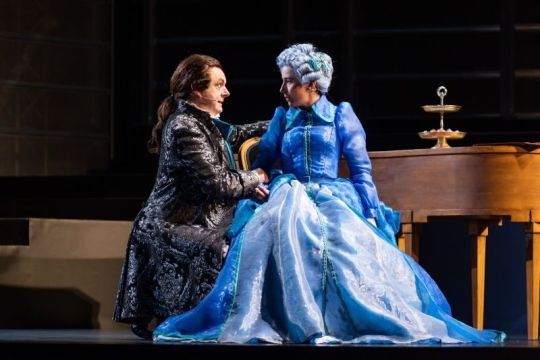
This is a superb production from director Craig Ilott (Smoke and Mirrors, American Idiot) and Red Line Productions, who manage the transition from their usual cosy environs of the Old Fitz to the Concert Hall with aplomb, anchored by a sublime, textured performance. If you make this your first show of 2023, you’ll be giving the rest of the year a lot to live up to.
Amadeus is playing until January 21, 2023, as part of the Sydney Opera House’s mammoth calendar of events for its 50th anniversary celebration.
Source
49 notes
·
View notes
Text
Mathew Baynton: ‘I sometimes think the culture wars only happen in people’s minds’
As he prepares to play Bottom at the RSC, the Ghosts star talks about why making comedy in the UK is no laughing matter
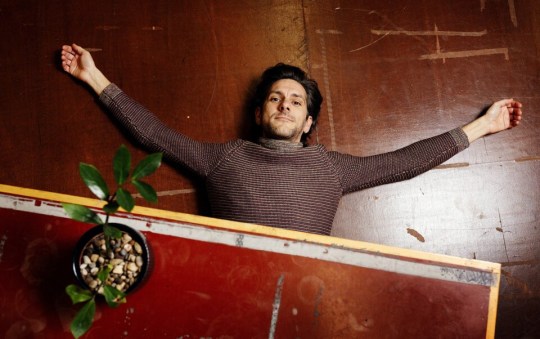
Before I meet Mathew Baynton I’m half expecting to encounter a version of the Regency poet he played with such expressive romanticism in the BBC’s exquisite hit sitcom Ghosts. Or the flamboyant rapping Charles II, just one of the many historical characters the collective reimagined with antic gusto in the children’s TV series Horrible Histories. Or even the fabulously reptilian Mr Fickelgruber from the recent blockbuster hit Wonka. In other words, surely an actor renowned for playing delicious Technicolour caricatures would be a bit outsized himself?
Instead when we meet at the RSC rehearsal studios in Clapham, Baynton slides along the wall as though trying to disappear into the paintwork. “I don’t like entertaining people socially,” he says apologetically. “At a recent wedding I was too shy to dance. I’d have no hesitation dancing my socks off in a show and looking very silly, but not at a wedding thank you very much.”
Baynton, 43, is about to play one of the silliest characters in the western canon, Bottom, the hapless, deluded wannabe actor in A Midsummer Night’s Dream at the RSC. It’s Baynton’s first theatre gig in 10 years. The reasons he hasn’t trod the boards for so long are perhaps predictable – the combination of screen and family commitments, he says: he has two children, 12 and eight, with his partner, the film historian Kelly Robinson. But also perhaps because no other stage role until now has made him think that “if I said no, I might spend the rest of my life wondering if I’d made a massive mistake”.
He’s been relieved to discover the Mechanicals, the amateur acting troupe of whom Bottom is arguably the least talented, are not the “beer-swilling rotund yokels with West Country accents” he remembers from mediocre productions in his youth. “My feeling with Bottom is that someone once said to him he was quite good at acting, and that’s been enough to make a monster out of him. He has precious little experience but just enough to make him think he can do it all. My Bottom will be ridiculous. But there is a real sweetness to his enthusiasm.”
Baynton is very good at finding the sweetness in the patently ridiculous. It’s there in Ghosts (which he co-created) about a mismatched bunch of spectral beings trapped together in a crumbling old house and whose final episode after five seasons last Christmas attracted 6.6 million viewers. There was an endearing bumbling charm to his pathologically helpless Berkshire county council worker Sam Pinkett in the 2013 cult sitcom The Wrong Mans, which he developed with James Corden. Even Fickelgruber wasn’t too menacing.
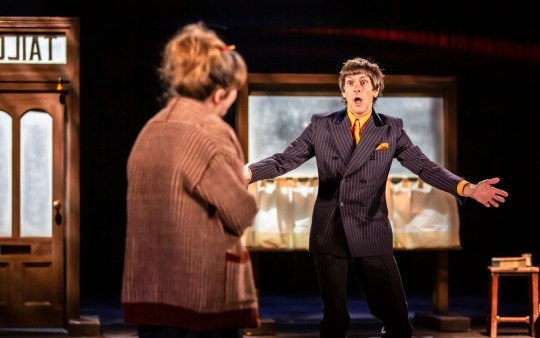
Surely, though, he would have been even better casting as Wonka himself? “Er, I don’t quite have the global reach of Timothée Chalamet,” he splutters. “Although, a bit like Bottom, I always think: I’d have a go at that!” He adores the way the film embraces old-fashioned spectacular storytelling. “It’s lovely to see budget being used for big choreography and lots of people dancing in a town square, and not just explosions and fights which are usually the things budget buys.”
He deplores, though, how hard it is now to get original family blockbuster entertainment greenlit. “I grew up in a golden era of that sort of thing – ET; Back to the Future. These days you can’t do anything in that area that doesn’t have existing IP. You need to give the financiers a pre-existing brand. You can’t say ‘I’ve written this idea about this kid who is friends with a crazy scientist’ and hope to make it into a big film. And that is very sad.”
You can, though, just about, still pitch original ideas with cross-generational appeal to TV. Ghosts was a rare example of a TV sitcom that enthralled adults as much as it did their children. What’s more, it did so with almost surreal placidity. In a cultural climate that seems to trade on people being as loud and divisive as possible, Baynton’s faith in an inclusive gentle comic mayhem feels positively subversive.

“Everything these days is designed to agitate because agitation is the quickest way to get someone’s attention,” he says dispiritedly. “In season two of Ghosts, we had an episode featuring a gay marriage, much to the outrage of Lady Button. But eventually she realised that the unhappiness in her own marriage stemmed from her sexually repressed homosexual husband. Softly softly, there is a thesis there. Which is that if we could just put our f---ing phones away and sit down with each face to face and talk, then [these polemical attitudes] will loosen.”
Baynton grew up in Southend, the youngest of three brothers, and spent an awful lot of time watching Monty Python and Dad’s Army with his father. He attended Rose Bruford College and then trained in clowning at the Ecole Philippe Gaulier in Paris. His first major professional success was Horrible Histories, which ran for five years from 2009; around the same time he started working with James Corden.
“We immediately hit it off,” Baynton tells me. “We were laughing at similar things,” Corden wrote him a part in Gavin and Stacey and Baynton then approached him with the idea for The Wrong Mans. A classic British sitcom pretending to be a Hollywood thriller, in which two jobsworths find themselves inadvertently embroiled in a fast-spinning web of crime and conspiracy, like much of his work it’s quietly radical.

“I had this bee in my bonnet about how comedy at the time was never allowed to have high production values. You had single-camera family sitcoms and you had brightly lit studio sitcoms but never anything that looked like a Coen brothers movie because the budgets are so low. So we thought, if we write something along those lines with James in it, maybe someone would take a punt. But the BBC said they couldn’t afford it. They said, either you rewrite it, or we junk a lot of it. So we went to America. In the end, it became one of the first America/UK co-productions [it was a co-production between BBC Two and the US streaming platform Hulu]. And that’s now become a widespread model.”
Baynton seems to be permanently busy: he’s currently writing a comedy film, which he can’t discuss, and this year will appear in the BBC’s forthcoming adaptation of Holly Jackson’s young adult thriller A Good Girl’s Guide to Murder. He worries, though, for the future of comedy on TV. “For the sixth year running Ofcom has labelled scripted comedy [at the BBC] to be at risk,” he says. “The amount being produced is at an all-time low. I know commissioners wish they could commission more, but for whatever reason they aren’t given the budgets. Which is mad when you think about how much comedy means to people over other sorts of programmes. No one puts ‘good sense of drama’ on dating apps.” Does he think comedy has become a casualty of the culture wars in which people are increasingly fearful of causing offence?
“You might think that if you only paid attention to the culture wars,” he says. “I sometimes think the culture wars only happen in people’s minds. Comedy is wide enough to accommodate many voices. And if you just get out there and go to a comedy gig, you will see brilliant people being funny all the time.”
#mathew baynton#mat baynton#the telegraph#rj: interview#rj: mathew baynton#rj: 2024#making a seperate post with these pictures#because WOW#he looks GOODDD
5 notes
·
View notes
Text
Full review from vox.com:
Hidden Blade / Wuming
Wang Yibo’s performance as Mr. Ye and the art created by the film’s director, Cheng Er
::-::-::-::-::-::
The shadowy puzzle-box pleasures of Chinese spy thriller Hidden Blade
Satisfyingly cerebral, Hidden Blade features a masterful Tony Leung and a breakout performance from Wang Yibo.
By: Aja Romano on February 28, 2023 7:30 am
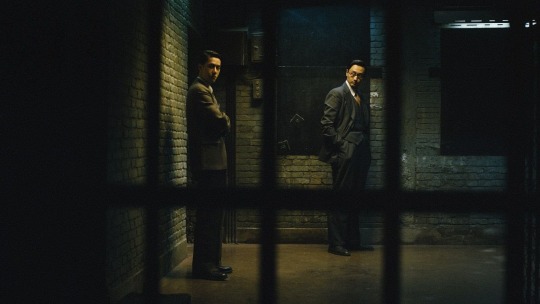
Wang Yibo and Eric Wang in Cheng Er’s moody, shadowy spy thriller Hidden Blade, now in cinemas. Well Go USA
Toward the end of Hidden Blade (无名), the arty Chinese World War II spy thriller that has now reached US cinemas, everything comes to a halt.
“Matte kudasai,” Wang Yibo, playing the canny, careful Secretary Ye, says in silky Japanese. Wait, please.
And then we all — the character he’s talking to, the camera, the film score, the audience, the movie — slow down and wait. We wait for him to light a cigarette, take a drag, then another. We wait for him to look at his reflection. We watch him, wreathed in smoke, take his time.
With a lesser actor, this would feel excessive, showy; it would flatten the moment. But this is Wang Yibo, star of The Untamed and Street Dance of China, former K-pop idol, sometime motorcycle racer, multitalented polymath, and multinational heartthrob. In the pause, tension and dark purpose coil in his jawline, his shoulders, in every flick of his wrist. I have never wanted to look at anything more in my life.
Hidden Blade has gone largely unnoticed in mainstream US media, usually getting name-checked as the legendary Tony Leung’s latest film. The New York Times gave it a kind but mixed capsule review. Other outlets that bothered to review it did so poorly, with multiple reviewers unable to tell cast members apart from one another (!), a handful misunderstanding and misstating the plot, one reviewer dismissing the entire cast apart from Leung. Several wrote it off as a propaganda film.
But Hidden Blade, from writer-director Cheng Er, deserves a much better critical assessment than this. It serves propaganda only in the way that the average war movie might glorify the homeland — think Top Gun: Maverick. In this case, that means a homeland battered by a brutal Japanese occupation. Our timeline centers around Republic-era China, several years after the Nanjing Massacre. The country’s combative factions — the Japanese occupants, the Kuomintang leadership, the current puppet government, and the underground communist resistance — all vie to control China’s future as the war wages around them. Our main characters, Director He (Leung) and his subordinate Secretary Ye (Wang), both work for the Japanese regime in Shanghai, rooting out members of each of the opposing factions and doing the governor’s bidding. But spies are everywhere, and their allegiances aren’t always obvious — sometimes not even to themselves.
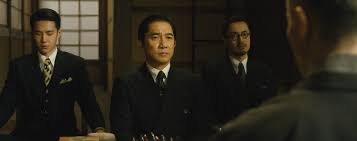
Hidden Blade’s production house, Bona Film Group, loosely placed this film into a ��trilogy” called the China Victory Trilogy. (The prior film, The Battle at Lake Changjin (2021), was a mega-blockbuster; this film had a far more lowkey release, though it’s been such a success — closing on $1 billion RMB, it’s reportedly the top-grossing art film in Chinese history — that there’s talk of a sequel.) Each film, linked thematically but not materially, highlights a different group of ordinary people battling a war. This outing explores the pressures placed on WWII spies who often had to work in complete isolation for months and even years; the film’s Chinese title translates to Anonymous. Cheng takes the smoke-and-mirrors obfuscation of the spy genre literally: Ye spends much of the time he’s onscreen symbolically mirroring He, while studying himself in mirrors, being looked at through mirrors, and functioning as a looking-glass for the film itself.
This could all easily feel like shallow gloss with little substance, and the plot seems relatively thin; but over the course of the film, that plot reveals itself to be a tightly edited jigsaw awaiting your assembly.
This is a big part of why repeated viewings of Hidden Blade are such a pleasure (I saw it six times in four days). The film is a metaphorical escape room you find your way through, muddling at first, then quicker and quicker until you arrive at an open door. Cheng’s aesthetic style flickers through the muted action of the first half, from Godard-like formalism to von Trier-esque visual war poetry to outright Tarkovsky homages. But steadily the stylistic flourishes give way to a riveting, sparse thriller with phenomenal fight scenes, staged with excellent attention to setting and detail by fight choreographer Chao Chen. Cai Tao’s cinematography has lingered with me for days, with some shots cracking the whole film wide open for me on third or fourth watch.
This film basks in tiny thematic details — the timing of a musical cue, the symbolism of a tableau, the way a character’s face is lit between light and shadow. Then there’s the symbology; my friends have been discussing the thematic element of food in this movie for days: The symbolism of an intimidating bowl of drunken shrimp, the political nuances of debates over French cuisine, the secrets of an unassuming box of pastry.
In other words, Hidden Blade’s cerebral challenges invite you to play the games its characters are playing. It opens itself to the audience more and more with every repeat viewing. The supporting cast makes the most of limited emotional real estate; Eric Wang and Zhou Xun sink their teeth into their very different roles in the spy game. Tony Leung’s performance in particular grows craftier and more intelligent on every viewing as you begin to understand the veneer of polite soullessness around which he layers his real, veiled emotions. The moments he lets them peek through are masterful to behold.
But as much as Tony Leung was made for subtle but heady roles like this, Hidden Blade belongs to Wang Yibo, and so does this review.
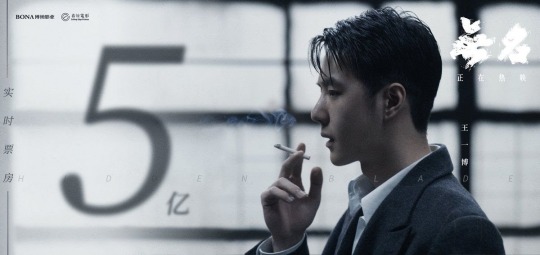
A production still of Hidden Blade featuring Wang Yibo, released for the film’s ¥500m box office. The film has since grossed nearly ¥1 billion. Bona Film Group
This is Yibo, after all, a 25-year-old wunderkind who spent his childhood training in Korea to become a K-pop idol but who returned to China and became a Chinese entertainer slash dance star slash actor instead. I first wrote about Yibo here in 2020 in my review of the historical fantasy series The Untamed. I described him then as “conveying Grand Canyons of emotional depth” through “mesmerizing infinitesimal facial adjustments.”
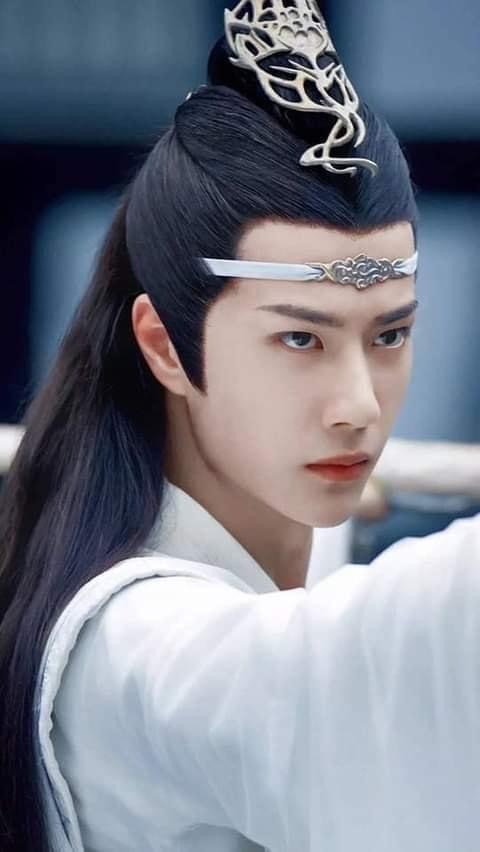
A screen cap of Wang Yibo as Lan Wangji from the global phenomenon, Chinese tv series, Chén Qíng Lìng / The Untamed (2019) Tencent (New Style Media Group)
Since then, I have watched Yibo disappear into one strikingly different character after another, embodying them all with talent and skill beyond his years; I have watched him deliver performance after performance, transforming himself onstage and off. He has a star quality that’s hard to describe until you truly get acquainted with his performances and his persona. On first impression, he’s rarely the hottest or the strongest or the glitziest entertainer in a room — but he’s the one who unfailingly blows you away in the end, the one you can’t stop talking about.
As Secretary Ye, Yibo packs the same intensity: He smolders and throbs and pulses his way through Hidden Blade, talking only rarely but speaking volumes with the soulful eyes that first captivated me and a jillion other fans three years ago.
Since The Untamed, Yibo has become a massive star in his home country. He was originally scheduled to make his film debut in the much more high-profile Born to Fly (now scheduled for a spring release), in which he stars as the equivalent to Tom Cruise in Top Gun. As much pressure as a role like that must be to play, the weight Yibo carries in Hidden Blade feels almost heavier. Cheng has talked at length about how the more he saw Yibo act, the bigger his part became; he rewrote the film around Yibo as production progressed, eventually transforming Ye from a smaller part into the soul of the movie.
That’s a huge responsibility, but Yibo shoulders it effortlessly. He immerses himself in Ye’s tortured psyche; he trembles and seethes and changes the mood of an entire scene with a single sharp glance. A debut like this, from an actor this young, in a part this intense, carrying the entire film beside one of China’s greatest living actors, all while juggling four different languages (Japanese, Mandarin, and Cantonese and Shanghainese dialects) feels remarkable. Yibo’s performance seals Hidden Blade’s status as an unexpected pleasure. Once finally assembled, its cinematic intricacies yield infinite rewards.
#sourced: vox.com#wang yibo#hidden blade movie#film review#no spoilers#wu ming anonymous#wwii china#period drama#tony leung#director: cheng er#cinematography#living art#take my money#ive watched it twice so far
31 notes
·
View notes
Text


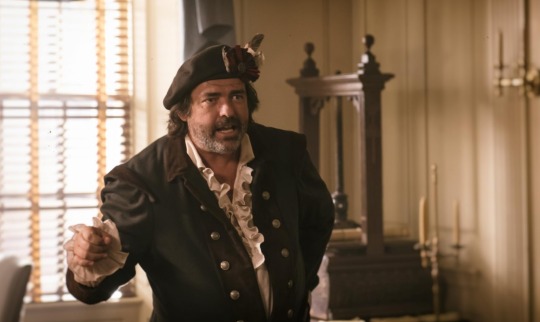
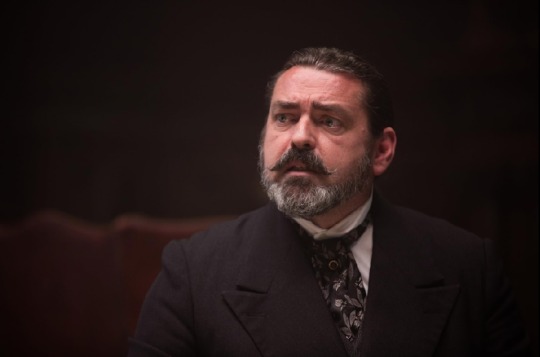
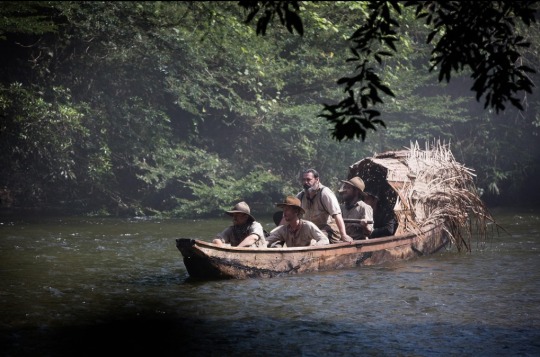




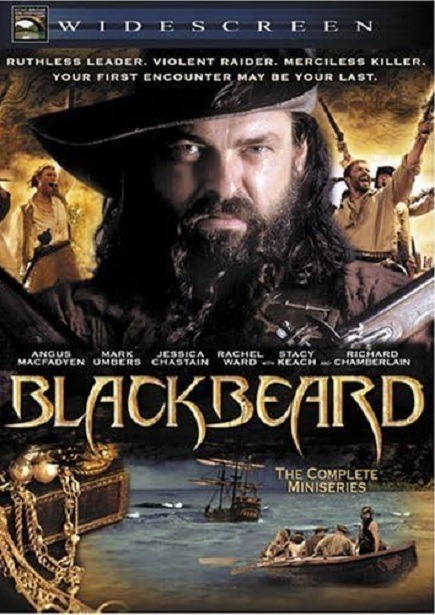
Happy Birthday Scottish actor Angus Macfadyen born 21st September 1963 in Glasgow.
MacFadyen had a nomadic upbringing; thanks to his father’s job with the World Health Organization, he spent his childhood and adolescence in places no less diverse than Africa, Australia, France, the Philippines, Singapore, and Denmark. He went on to attend the University of Edinburgh and received theatrical training at the Central School of Speech and Drama. MacFadyen got his professional start on the Edinburgh stage, appearing in a number of productions at the famed Fringe Festival.
Breaking into television in the early ‘90s, Angus appeared in a number of series for the BBC, including an acclaimed adaptation of David Leavitt’s The Lost Language of Cranes. Following the critical and commercial success of Braveheart, the actor got a rudimentary dose of recognition across the Atlantic, but remained largely unknown outside of the U.K. He starred with Gabriel Byrne and Bill Campbell in the World War II drama The Brylcreem Boys in 1996, playing a German pilot being held captive in neutral Ireland. Until 1998, when he portrayed Peter Lawford in the made-for-cable The Rat Pack, MacFadyen’s other screen appearances tended to be in films that were widely ignored by audiences and critics alike.
He has played Orson Welles in Tim Robbins’ 1999 film, Cradle Will Rock, Philip in the BBC’s production of The Lost Language of Cranes, Dupont in Equilibrium and Jeff Denlon in the Saw series of films
Some of you might remember Angus in the excellent Takin’ Over the Asylum which also starred two great actors in Ken Stott and David Tennant. We last say him on the big screen in very underrated The Lost City of Z
Angus reprised his role of The Bruce last year in Robert the Bruce, among the co-stars, playing his wife Elizabeth de Burgh is Mhairi Calvey, who aged just 5 was ‘Young Murron’ in Braveheart. While I enjoyed the film, I thought that maybe the role of The Bruce was maybe better suited to a younger actor, but it was his “baby”, and he strived for years to get the film made.
He also appeared in the TV series Strange Angel, about a rocket scientist in 1940s Los Angeles is secretly the disciple of occultist Aleister Crowley, played by our man. I have yet to see this, but must look it up. The series was canceled after two seasons.
Angus is currently part of the Outlander cast playing a Redcoat Brigadier-General, he has no less than five projects on the burner at the moment, the pic of which, for us Scots is probably a movie called The Last Redemption, which also satrs the popular James Cosmo.
35 notes
·
View notes
Text
Animation Face-Offs
I find it amusing that the first real major animated movie box office show-off is occurring some 35 years after the one that arguably started it all...
November 18, 1988... Walt Disney Feature Animation's celebrity-loaded modern musical OLIVER & COMPANY from first-time director George Scribner, and Universal's release of the Steven Spielberg/George Lucas-produced ex-Disney director Don Bluth adventure THE LAND BEFORE TIME...
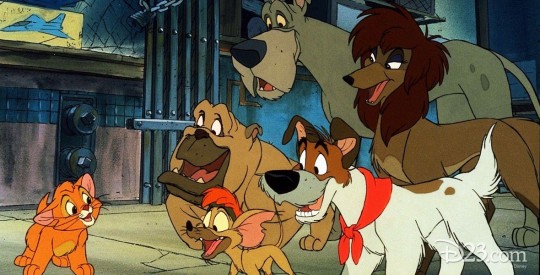

This wasn't the first time two animated pictures opened next to each other.
In fall 1982, Hanna-Barbera's HEIDI'S SONG opened opposite a Looney Tunes clipshow anthology movie called 1001 RABBIT TALES. Combined, they made $5m at the domestic box office... Not great times to open an animated feature that wasn't Disney, and not that their distributors probably even cared at the time anyways.
Sometimes, there are around two animated features a month. It's not uncommon for two studios to share. Off the top of my head, you had - in November 2010 - MEGAMIND at the beginning of the month, and TANGLED before Thanksgiving. In the early summer of 2013, MONSTERS UNIVERSITY only opened about a few weeks before DESPICABLE ME 2. TROLLS and MOANA shared November 2016. Again, just random examples off the top of my head.
But usually, they're spaced out... TROLLS BAND TOGETHER and WISH are five days apart...
TROLLS 3 is projected to take in around $20-25m this weekend, which is significantly less than what TROLLS took in back in 2016, but still alright for this kind of movie. WISH is set to out-open it, with over $50m for the 5-day Thanksgiving weekend stretch. For a $200m-costing movie, it's going to need all the legs in the world to get by. TROLLS 3 will need to pull some good weight too to more than double its much more modest $95m budget. (Wild to think that $95m seems *low*... There was a time when a DreamWorks/PDI movie cost $75m... And for a good while, roughly $135m!)
I'm curious to see how each film affects one another. Families aren't made of money, and there's gotta be a kind of adult pull to really make big bucks, and I'm not sure if either of these films have that. Plus you have stuff like WONKA right around the corner... Thankfully no Marvel, Star Wars, or Avatar movie to counter with. Although, PUSS IN BOOTS Dos last year, woooooow. That cat held his own against the blue cat aliens.
But yeah, if you think about it... This is a rare head-to-head race.
One could argue we saw this in late winter of 2021 when Warner Bros. released their live-action TOM & JERRY, and then Disney Animation had RAYA AND THE LAST DRAGON out a week later. But that was before vaccines got out for all age groups (they were distributed to the elderly first, I - who was 28 at the time - couldn't get my first shot until April.), and the films had simultaneous streaming debuts, so I don't really count that. Plus, Cinemark theaters refused to show RAYA over a disagreement on who got most of the earnings. (That would've been my return trip to the movies after a year-long hiatus, my return ended up being A QUIET PLACE: PART II two months later.)
It's funny how TROLLS 3 is Universal and WISH is Disney... Just like how LAND BEFORE TIME was Universal, and OLIVER was Disney.
The Disney-Universal race was successful for both. OLIVER took home $53m domestically (the $71m figure you often see comes from the film's 1996 re-release), LAND BEFORE TIME took home $48m. Worldwide is up the air, because Disney never released OLIVER's numbers, Universal reported that LAND made around $84m. Winner is unknown, but it was always assumed to be LAND. Maybe because dinosaurs are more Universal than a modern-day New York comedy? Who knows!
Perhaps greatly inspired by that double-whammy of animated hits, MGM/United Artists wanted to try that for themselves. Don Bluth split with Spielberg and Lucas due to creative disagreements during production of both LAND BEFORE TIME and his other Spielberg collab AN AMERICAN TAIL, and set up ALL DOGS GO TO HEAVEN with the lion. MGM/UA released ALL DOGS the same day as THE LITTLE MERMAID...
Bluth's movie got left to sink by the Ron Clements and John Musker-directed musical sleeper hit... It wasn't even close. $27m domestic vs. $84m domestic, and in addition that, MERMAID's worldwide figures put it at roughly $183m. (Again, in 1989-90, without the 1997 re-release counted.) ALL DOG's worldwide total is unknown.
This didn't entirely scare distributors away from trying again.
The fall of 1990 was originally set to see another Bluth vs. Disney face-off. If plans had held, MGM-Pathe would've released Bluth's ROCK-A-DOODLE on the same day as Disney's sequel THE RESCUERS DOWN UNDER. MGM-Pathe ran into financial and legal problems, putting Bluth's film in limbo for a bit...
Instead, Warner Bros. went toe to toe with Disney, releasing an animated feature that wasn't a Looney Tunes clipshow: THE NUTCRACKER PRINCE... Suffice to say, it barely scrounged up $1m domestically, and Disney's sequel had troubles of its own, stalling at $29m domestically, $47m worldwide.
Two films fled from the autumn of 1991, as BEAUTY AND THE BEAST looked to not be a repeat of RESCUERS DOWN UNDER, but a repeat of LITTLE MERMAID and OLIVER's successes... 20th Century Fox - who had FERNGULLY: THE LAST RAINFOREST - and The Samuel Goldwyn Company - who picked up ROCK-A-DOODLE - chickened, literally in the latter's case...
Only Universal had the guts to take on the beast... By releasing AN AMERICAN TAIL: FIEVEL GOES WEST the same day. The Don Bluth-less sequel made only $22m domestically, while BEAUTY AND THE BEAST made... $145m in North America alone, and blew up with $331m around the world...
After FERNGULLY and ROCK-A-DOODLE wisely fled from BEAUTY AND THE BEAST, they duked it out in April 1992. DOODLE opened the first weekend of the month, with FERNGULLY following. FERNGULLY won with $24m domestically, DOODLE struggled with $11m. (It's worth noting that DOODLE first came out in the UK in August of 1991.)
Universal initially thought they'd have WE'RE BACK! A DINOSAUR'S STORY ready to compete with ALADDIN, but they likely realized that that was not a great idea... WE'RE BACK! opened over a full year after ALADDIN and still flopped hard. It opened nearby BATMAN: MASK OF THE PHANTASM, which also made a paltry amount.
From there on out, things were typically spaced out. Sometimes the smaller efforts opened close to each other.
And now here we are, Thanksgiving week of 2023... We have trolls vs. wishing stars. Universal vs. Disney. It'll be fun to watch, but I hope the two film crews of both get to put food on their tables once more.
9 notes
·
View notes